You are here: Foswiki>Dmi Web>WinterSchool2021>WinterSchool2021Infodemic5G (28 Jan 2021, MaXiGaS)Edit Attach
Infodemic 5G
How Interpretative Frames are Co-articulated on Social Media? An Instagram versus Parler Case Study
A DMI Winter School 2021 project
Team Members
Niels ten Oever, Maxigas (coordinators) Bryan Steffen, Eleni Maragkou, Emile Provendier, Emma Breuer, Giovanni Lombardi, Giulio Valentini, Jasper van der Heide, Jörn Preuß, Roxana Varvara Boboc, Selin Ashaghimina, Sylvain Mignot, Veronica Fanzio, Veronica MorettiContents
- Summary of Key Findings
- 1. Introduction
- 2. Datasets
- 3. Questions
- 4. Methodology
- 5. Findings
- Discourse analysis Instagram versus Parler
- User Analysis Instagram vs. Parler
- Time series and locations
- What are the interpretative frames provided by 5G equipment vendors and network operators?
- 6. Discussion
- 7. Conclusion
- 8. References
- 9. Appendix
- Slides (link)
- Datasets (links)
Summary of Key Findings
The main takeaways from this project are the differences in how 5G is discussed on mainstream and alternative platforms (Instagram vs. Parler) and the connection to the way 5G is represented by vendors and network operators. The key finding is that the vendors and network operators discuss 5G in vague terms, failing to create a concrete and meaningful imaginary that people can draw from. In this context, users from various platforms associated 5G with several issues, which vary across mainstream and alternative platforms. The main takeaway in this regard is that the discourse on Instagram is much more fragmented and lacks cohesion, leading to several clusters of themes with little to no connections between them. On the other hand, Parler hosts a much more coherent approach, where the discussion is much more concrete and related to politics and corporate figures. The project explores these various critical interpretative frames to gain a sense of how 5G is conceived by various communities versus how it is presented by manufacturers.1. Introduction
Our study aims to describe a set of critical interpretative frames about 5G pertaining to different actors and which circulate among several social media platforms: Instagram and Parler. The analysis is concerned with obtaining a deeper understanding of how these frames compare among mainstream and alternative platforms. Moreover, the project seeks to uncover how the corporate actors such as equipment vendors and network operators involved with 5G provide frames of understanding related to their product. One reason why these critical interpretative frames are relevant is because 5G deployment involves both a new massive infrastructural project, as well as a new set of standards which are still yet to be finished. In the absence of a comprehensive imaginary of 5G, it is up to vendors/manufacturers and people to develop frames of understanding of a new object. Another specific characteristic of 5G is that it transgresses all of the 7 levels of the Open Systems Interconnection model (application, presentation, session, transport, network, data link, physical); what this creates is a form of concentration of power among the telecom market and is in opposition with the ethos modularity and decentralization of the internet. Given that "changes to the globalising world are being written, not in the language of law and diplomacy, but rather in the language of infrastructure" (Easterling, 2014), 5G poses new, underexplored issues on several planes -- governance of the information society and imaginaries that emerge on different media. The lack of information on what 5G is and what it does led to the development of alternative forms of understanding and conspiracies around it. The theoretical concepts which guided our work were new conspiracism_ (Muirhead and Rosenblum, 2019), referring to "conspiracy without the theory". It explains conspiracies in terms of political theory. What seems to emerge from this process are "conspiracy fragments" as opposed to theories. We argue that in the absence of a clear imaginary from the corporate perspective, communities present on different social media platforms develop their own understandings. As we show in our report, these critical interpretative frames differ according to the platform user communities. We also contribute to the research done in the area of COVID-19 and 5G conspiracy theories on social media (Bruns et al., 2020, Ahmed et al., 2020), both in terms of key findings as well as developing methodological approaches for mainstream, as well as alternative platforms. Therefore, given the considerations on 5G and departing points for the conceptual journey of the project, we explored the textual and visual frames on Instagram and Parler; we looked both at the user presence and activity, as well as analyzing the corporate marketing communication from Instagram and YouTube as a control group.2. Datasets
A dataset of metadata of Instagram was provided by the larger Infodemic research project as a starting point for this research effort. This was scraped from Instagram using the Python library Instaloader and include data recorded since the beginning of the pandemic. The dataset was created by querying for words related to the infodemic, including "corona" and 5G related keywords. Additionally, posts by known conspiracy theorists were gathered. Then this dataset was further trimmed down with this restriction _(5g OR fiveg) AND (corona OR virus OR covid)_. Later, using Instaloader, a non-random sample of these images were also downloaded for visual analysis. A distinct dataset of the social network Parler was scraped during the Winter school. In order to do so we first checked what hashtags related to 5G had the co-occurrences. Then we scraped a data set per hashtag, as the Parler search engine does not allow multiple hashtag search. The tool used was Parlance. Then these datasets were merged, and finally standardised to be compatible with the Instagram dataset in order to allow for meaningful comparisons. Additionally, for comparison in the timeseries, a dataset of COVID-19 cases per day per country maintained by the European Centre for Disease Prevention and Control was used. The historical dataset contained cases until the 14th of December. We used data on cases in the USA exclusively, as this correlated more with the Instagram time series. We also looked at images in the Instagram and Parler datasets, downloaded them and attempted some visual analysis. We downloaded the images from Parler with a command similar to the following Bash one liner:
grep -Po '\"https://(.?\*)\[jpg\|png\]/'\" parler.csv \| parallel -t
\--bar \--joblog job.log wget {}
In order to understand the corporate perspective we gathered a set of
different datasets from various platforms:
a. Websites of a list of 5G related companies. Used a custom script for this.
b. YouTube video thumbnails of videos with 5G in the title, gathered with YouTube Data Tools.
c. Content of Instagram accounts captured with Instaloader.
3. Questions
Overall research question
What are the critical interpretative frames of 5G on social media platforms, especially regards to the infrastructural claims of 5G conspiracy theorists?Sub-questions
- What are the main motifs, symbols and epistemic phrases that epitomise 5G across platforms? Can we establish sub-categories and clusters of 5G conspiracy theories on social media? How are these structured internally?
- How does 5G discourse evolve over time and space?
- Do 5G conspiracies mirror or overlap with imaginaries of 5G providers?
4. Methodology
Discourse analysis Instagram vs. Parler
Textual analysis for the instagram and Parler discourse
For the Instagram dataset, we had to reduce the size of the data. We chose to remove all the posts that had less than 100 upvotes, leaving us with around 3000 posts. From there, we used the text analysis platform Cortext to extract a list of the most recurrent terms. We then created a co-occurrences network to see which words are frequently used together. We did the same for Parler except we did not filter it in the beginning. Input data was the 3000 dataset for the Instagram visualisation and the Parler dataset. When proceeding to the terms extraction, the software makes a cleaning of the text removing all types of punctuation. It also provides a lemmatization of the words to ensure that some words won't appear multiple times (so for example, the plurals of words will be considered as singular to really count occurrences). Once the terms extraction is made, we use the "Network analysis" option and tell the software to use the terms list we just created. To have a more readable network, we limited the appearing nodes to 75. We verified that it was the best number, since it (a) eliminates some useless (or difficult-to-explain) clusters, and (b) keeps the most relevant clusters of words on the visualisation.Narratives
Based on two datasets with the key users and posts, we created two sub-datasets of 200 most-liked Instagram posts and 200 most-liked Parler posts. These liked posts were picked to gather some preliminary insights. During the coding process we used colors for the body text. The whole dataset was imported into the Nvivo software as a new file. Then we followed a three-step procedure:- First step (in vivo categories): coding line by line (both text and hashtags).
- Second step (category clusters): creation of child-nodes to simplify the analysis.
- Third step (abstraction): creation of new core categories derived from the code-aggregation.
User analysis
As both platforms afford the use of hashtags, quantitative analysis of the 200 most-liked videos per platform of the data sets was done through co-hashtag network visualization in Gephi in order to first, situate 5G within the landscape of infodemic-related hashtags, second, identify possible clusters of hashtag co-occurrence, and finally, compare the network structures between Instagram and Parler data sets. To gain further insights into the different user groups and conspiratorial tribes sharing content related to 5G conspiracy theories on Instagram and Parler, the initial datasets were reduced to the 200 most-liked videos per platform. In the first round of coding, the occurring users were sorted by user group through qualitative analysis of their feeds and close reading of their biographies. For the Instagram sub-dataset, the labels "ordinary user" (i.e. personal accounts predominantly posing content that was unrelated to conspiracy theories), "conspiracy theorist", "deleted", were used. For Parler, the label "ordinary user" showed no results, so it was not further considered in the analysis. However, the label "conspiracy theorist" was also used, as well as the platform-specific label "independent media", for non-conspiracy-related alternative media accounts, was used. After the general user coding, the conspiracy theory accounts within the respective sub-datasets were further categorized by *tribal affiliation*. The Instagram dataset was sorted into the conspiracy tribes "Trumpist", "far-right, "alt-health", "alternative news", "Anti-Establishment" "anti-bill-gates", for accounts specifically centering on Bill Gates conspiracies, "religious fundamentatlist", and "other", for accounts sharing conspiratorial content that could not clearly be categorized as belonging to one specific tribe. For Parler, the following conspiracy theory tribe labels were used: "Far-right", "Trumpist", "Anti-Establishment", "alt-health", "alternative news", "communist", "political union".Time series and locations
Based on the Instagram, Parler and Covid datasets we created a time series in 2020. Besides these initial datasets, we looked at 5G coverage according to the Ookla 5G map. From a sample of archived version of this webpage on the Internet Archive's Way Back Machine, we retrieved some historic numbers of 5G coverage. Furthermore, we attempted to look at the locations of posts, and whether these matched events such as cell tower burnings. A first attempt was done by using Named Entity Recognition on the body of the Instagram posts in the initial dataset. This yielded too many false positives and was dropped. A second attempt tried to gather location data from the metadata in the post, information that was not included in the initial dataset. For this instaloader was used again. However, the rate limits of this method of scraping prevented the gathering of all the images. In the end 1500 images were scraped in the timeframe of the WinterSchool, 75 of which contained location data.This was too little for analysis and was therefore dropped. A third attempt checked whether cities from a list of cities appeared in the body of posts. This again yielded a lot false positives, and was therefore changed to a regular expression search"\\b{city}\\b" where {city} again was a city from the list of
cities. This yielded less false positives. Again, due to time
constraints, it was not possible to create a world map (over time), and
we instead focused on one city that appeared often: London. Future
research could make use of location data found in the Parler archive
that was gathered and published in the last days of the Winter School in
the immediate aftermath of the storming of the US Capitol.
Vendors
Textual analysis of manufacturers' websites and instagram posts.
We close-read a hand-picked selection of web pages dedicated to 5G on the websites of companies. The list of companies was compiled by Niels who has done research into 5G governance, so he has a good overview of the relevant stakeholders. We annotated meaningful terms, based on quantitative appearance and visual significance. We compiled a list of available websites, divided between Equipment Vendors and Network Operators. We scraped through Lippmannian Device separately, putting a set of keywords chosen in the previous step, and setting the "number of results per query" at 10. The operation yielded a CSV file and a word cloud. We turned the textual body from the CSV into a word tree, one for each list and one all together.Methodology YouTube channels
We found providers' YouTube channels (if available) and scraped their video lists using YouTube Data Tools, and collected video metadata. For each provider, video titles were filtered for mentions of 5G. A collective dataset of 1222 videos was then compiled. Finally, the video titles and thumbnails were analysed, by creating a word cloud (on https://www.jasondavies.com/wordcloud/) and an image wall (with ImageSorter), respectively.Methodology Instagram accounts
Based on a list with the key vendors and network operators, three companies from each category were picked to get preliminary insights into the representation of 5G by companies. The six companies which were picked for the preliminary analysis: At&t, Cisco, Nokia, Verizon, Vodafone and Ericsson. Using the Instaloader Python module, we started to scrape all the posts from these six Instagram accounts, including pictures and their descriptions. Following from this, a second script was used to give us all posts which include the hashtag 5G in their description.Methodology of getting images from websites of vendors and operators about 5G
We queried the Qwant search engine for images located under the domain of these companies (like cisco.com for Cisco) and downloaded the first 100 hits with a script. In order to avoid rate limitation on requests to the search engine, we tunnelled the connections through Tor, rotating the identity for each request (taking advantage of the NEWNYM signal in the Tor protocol, as explained in the script comments).5. Findings
This section consists of an exploration of the datasets according to the methodological paths previously explained. The aim of this section is to provide an in-depth understanding of how the communities on the two platforms discuss 5G, how the discourse fluctuates across time, as well as how vendors and network operators provide an imaginary of 5G on their websites, Instagram and YouTube profiles.Discourse analysis Instagram versus Parler
Instagram Co-hashtag network
In the network visualization of the top 200 most-liked posts on Instagram (Figure 1) we can observe some fairly centrally located nodes of hashtags such as "5G", "COVID", "newworldorder", "plandemic", "QAnon", "Religion" that do not seem to belong to any particular clusters. However, on the edges of the network, one can see a variety of smaller clusters. Examining these smaller clusters, a notable observation that can be made is that they do not seem to represent a single "tribe" of conspiracy theories but they consist of various iterations of the big, central nodes. In the case of 5G-related hashtags one can find hashtags such as "5gbeastsystem", "noto5g", "fuck5g", "stop5grollout" within different clusters spread throughout the whole network. This indicates that while there seem to be groups with slightly different interpretative frames around different conspiracy-related objects, from an aspect of hashtag-use, they seem to be similar in the issues and perspectives they express without being uniformly coherent.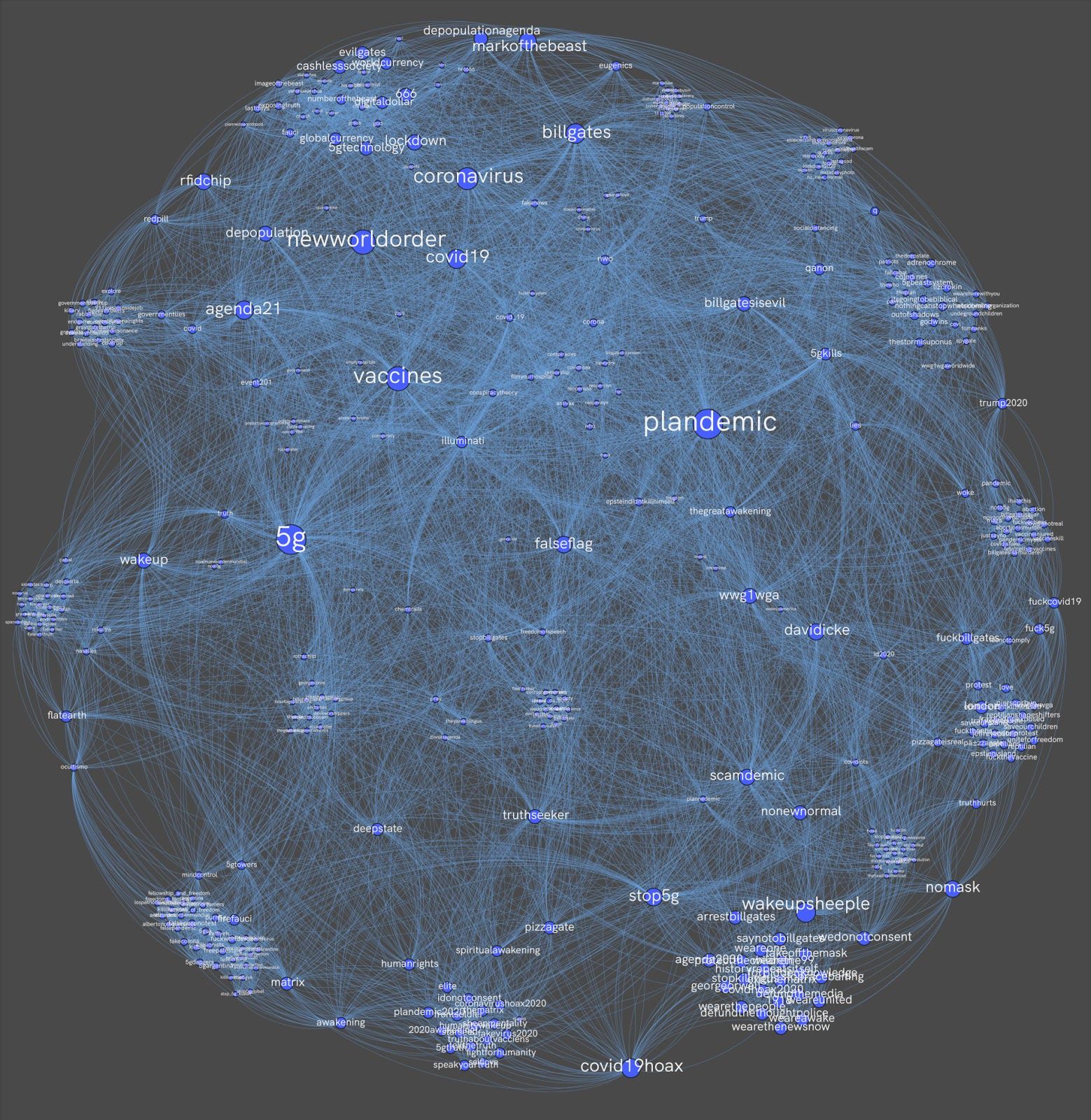 Figure 1: Co-hashtag network visualization of top 200 most engaged posts on Instagram (Click to enlarge)
Figure 1: Co-hashtag network visualization of top 200 most engaged posts on Instagram (Click to enlarge)
Parler Co-Hashtag network
In the network visualization on the top 200 most-liked posts on Parler (Figure 2), there are a small number of large clusters with 5G as the central node of the network. The cluster in the upper part of the network consists of a number of Trump-related hashtags such as "trump 2020", "maga", "alexjones" that are situated quite closely to the central 5G node as well as various covid-conspiracy-related terms such as "covidhoax", "cdc" and "agenda21". The lower clusters consist of a collection of deep vernacular web terms from various conspiracy theories, most of them being less related to 5G and COVID, such as "frazzledrip", "wwg1wgaworldwide", "pizzagateisreal" or "qdrops". Based on the clustering structure of Parler co-hashtag usage, there seems to be a more deliberate and/or uniform approach to discourse around conspiracy topics. Furthermore, the large amount of QAnon-related but not COVID- or 5G-related hashtags could indicate that discourse on Parler is not focused on 5G as the center issue.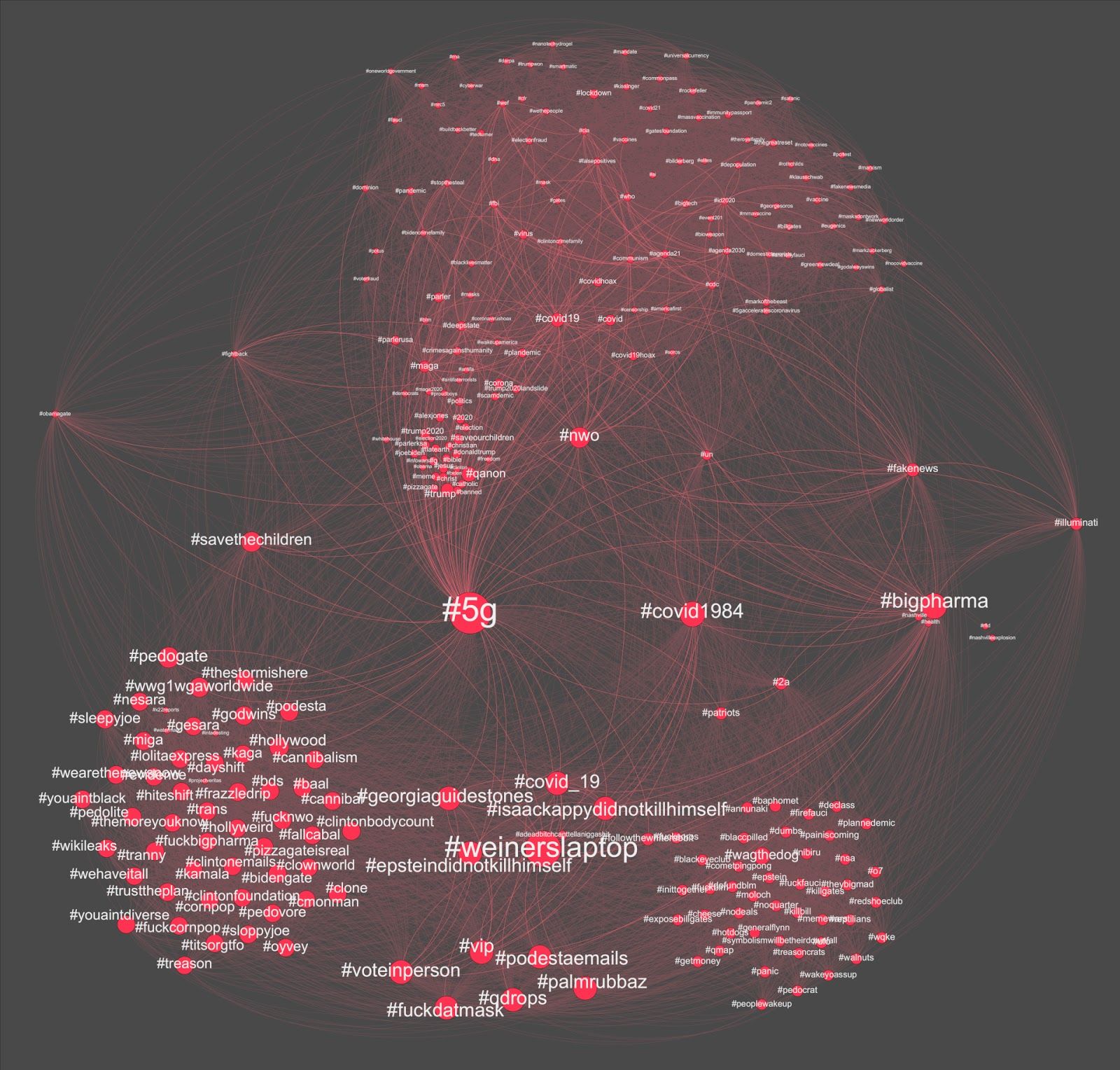 Figure 2: Co-hashtag network visualization of top 200 most engaged posts on Parler (Click to enlarge)
Comparing the network visualizations of Instagram and Parler, we found
that 5G-related discourse on Instagram is considerably more dispersed
into numerous, smaller clusters. The variety of hashtags that are
slightly changed iterations on the 5G hashtag could indicate stronger
engagement with 5G at the center of conspiracy-related discourses. In
contrast, the hashtag clusters on Parler are large and considerably
lower in number, showing a high amount of deep vernacular terms less
related to 5G and COVID, indicating that conspiracy discourse on Parler
is less centered around 5G.
Figure 2: Co-hashtag network visualization of top 200 most engaged posts on Parler (Click to enlarge)
Comparing the network visualizations of Instagram and Parler, we found
that 5G-related discourse on Instagram is considerably more dispersed
into numerous, smaller clusters. The variety of hashtags that are
slightly changed iterations on the 5G hashtag could indicate stronger
engagement with 5G at the center of conspiracy-related discourses. In
contrast, the hashtag clusters on Parler are large and considerably
lower in number, showing a high amount of deep vernacular terms less
related to 5G and COVID, indicating that conspiracy discourse on Parler
is less centered around 5G.
Global vision about how conspiracy theories are structured in Instagram using the whole dataset
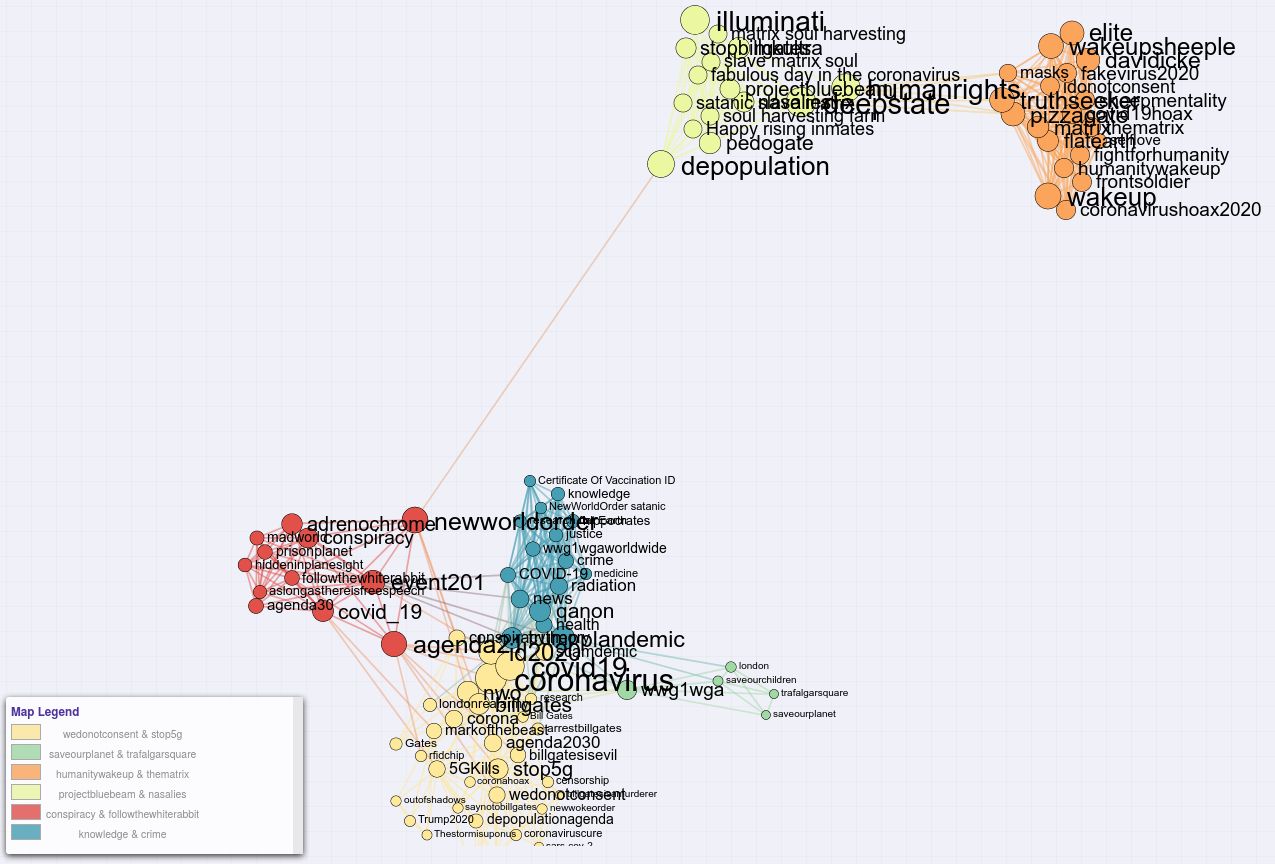 Figure 3: Co-occurences network of the main Instagram dataset featuring the most words (including unigrams, bigrams and trigrams, click to enlarge)
When analysing the overall Instagram dataset, one of the main findings is that there seem to be different levels of conspiracy theories, but one central thematic, that is issues and matter about "human" in general:
Figure 3: Co-occurences network of the main Instagram dataset featuring the most words (including unigrams, bigrams and trigrams, click to enlarge)
When analysing the overall Instagram dataset, one of the main findings is that there seem to be different levels of conspiracy theories, but one central thematic, that is issues and matter about "human" in general:
- Human Rights (surveillance and consent): Orange/Yellow Cluster
- Human Health (health concerns about electro-magnetic frequencies, maybe linked with the idea of a virus): Blue Cluster
- Human Governance (political agendas, corporates control): Red Cluster.
What is the content of the critical interpretative frames on Instagram and Parler?
We first tried to identify some global thematics in the Instagram and Parler post using co-occurrences analysis. One of the original hypotheses was that the discourse on the platforms and the imaginary between what we find in text and image was not totally logical (for instance, catastrophic and apocalyptic terms in discourse but very ironic pictures like memes, etc.). This is the kind of thing we can find one platforms like Facebook or Reddit (for example the meme wars of Trump supporters during 2016's election).Instagram discourse
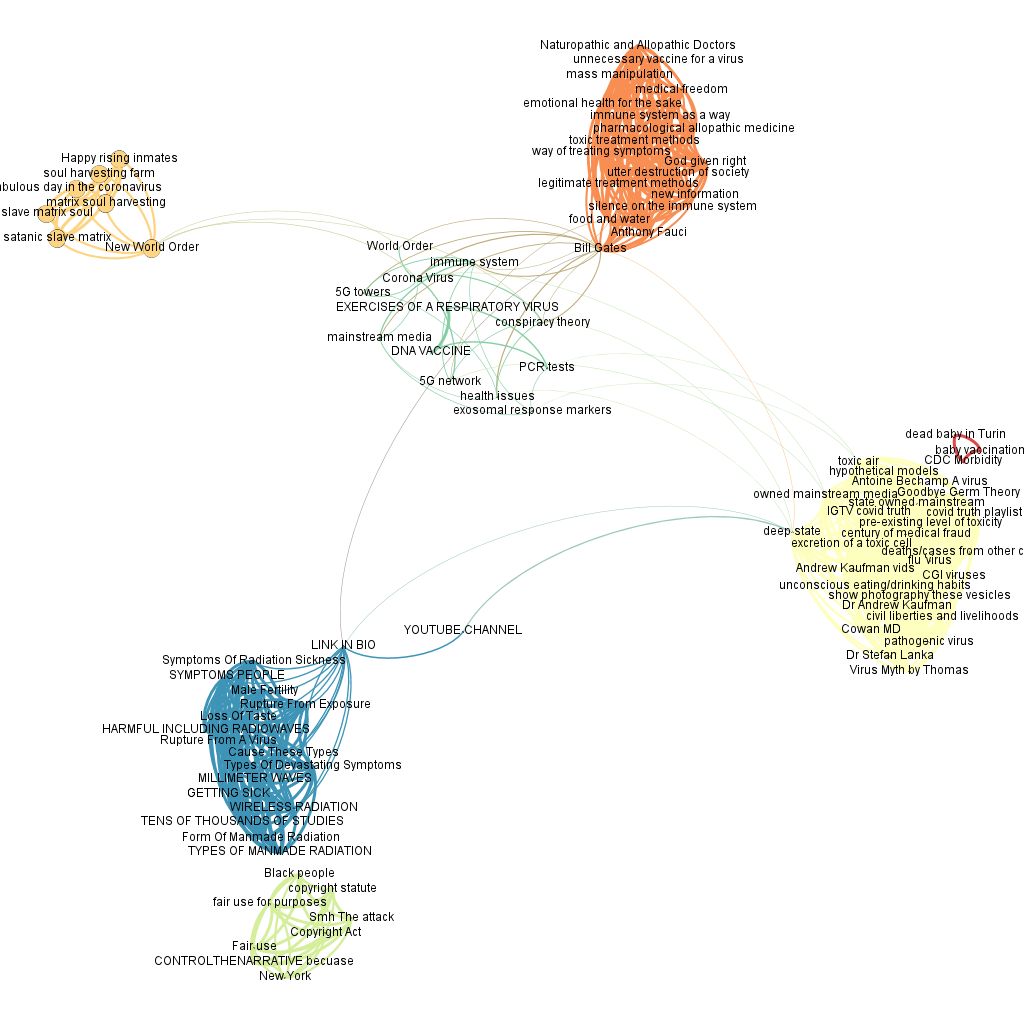 Figure 4: Co-occurences network of the words used by Instagram users on the 3000 post dataset (Click to enlarge)
We can identify six main clusters:
Figure 4: Co-occurences network of the words used by Instagram users on the 3000 post dataset (Click to enlarge)
We can identify six main clusters:
- First (dark yellow) one is very satanic and matrix. New world order that dominates people.
- Second (orange) cluster is unclear, talks about legitimate treatments, Bill Gates and manipulation through the vaccine.
- Third (dark green) seems to make a link between virus and 5G.
- Fourth (blue) is clearly about radiation of 5G and the harmful effects.
- Fifth (light green) is concerns about fair use and the rights of the citizens.
- Last one (light yellow) is not clear but the main idea seems to revolve around covid being a hoax.
Parler discourse
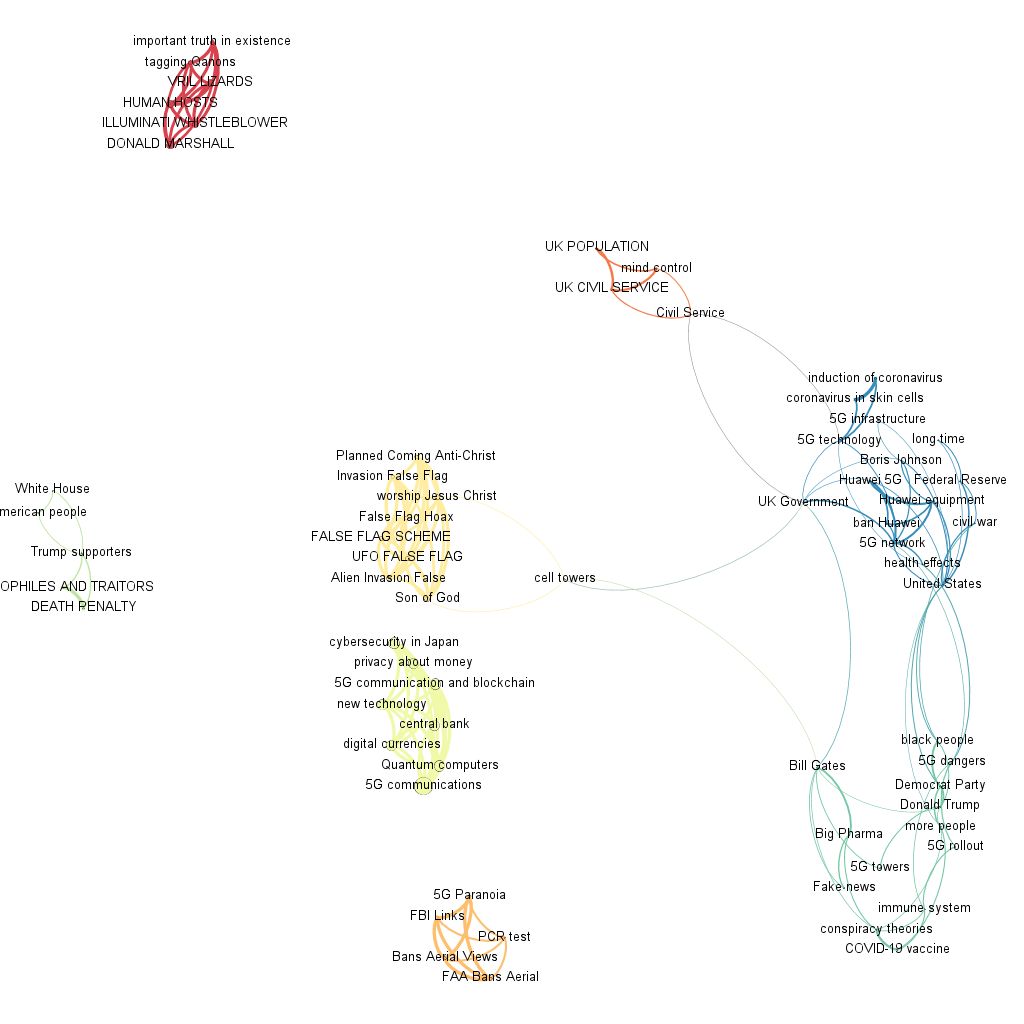 Figure 5: Co-occurences Network of the words used by Parler users (Click to enlarge)
Again, we can identify six main clusters:
Figure 5: Co-occurences Network of the words used by Parler users (Click to enlarge)
Again, we can identify six main clusters:
- The first (red) cluster is about illuminati and men-shaped lizards.
- The second one is related to Trump, US and MAGA and contains a lot of US symbols.
- Third talks about anti-Christ but also UFOs and a bit about religion.
- Fourth is the technical aspects of 5G, quantum computers, cybersecurity. It is not related to any other cluster which might mean that there is also a "serious" discussion about 5G without necessarily linking it to conspiracy.
- Fifth is about the UK and mind control.
- Sixth is about a link between covid and 5G, + UK and Huawei. Basically a conspiracy that the UK worked with Huawei to create covid.
Crossing image and text imaginary
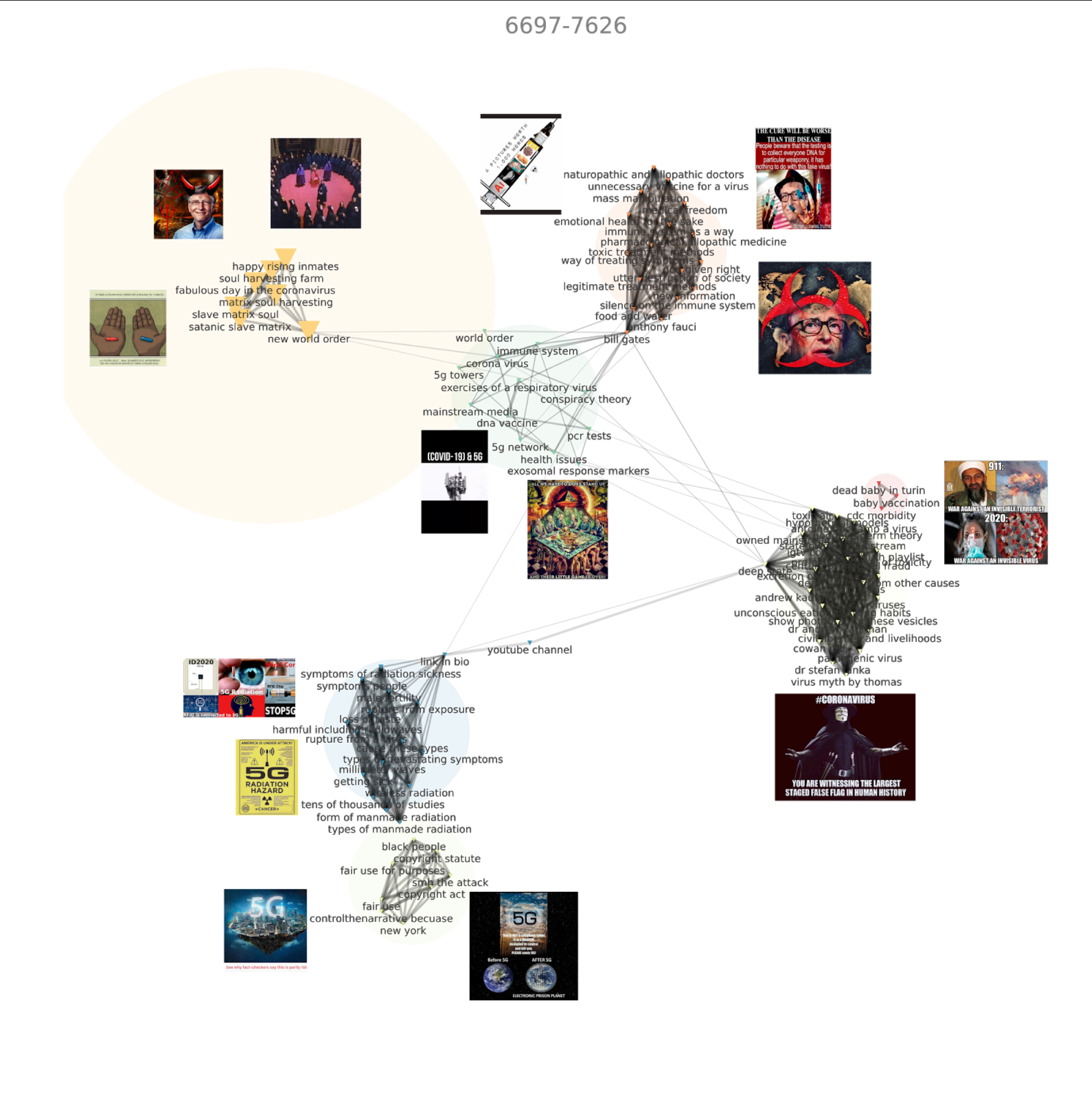 Figure 6: Co-occurences Network of Instagram posts featuring corresponding image imaginary of the users (Click to enlarge)
Figure 6: Co-occurences Network of Instagram posts featuring corresponding image imaginary of the users (Click to enlarge)
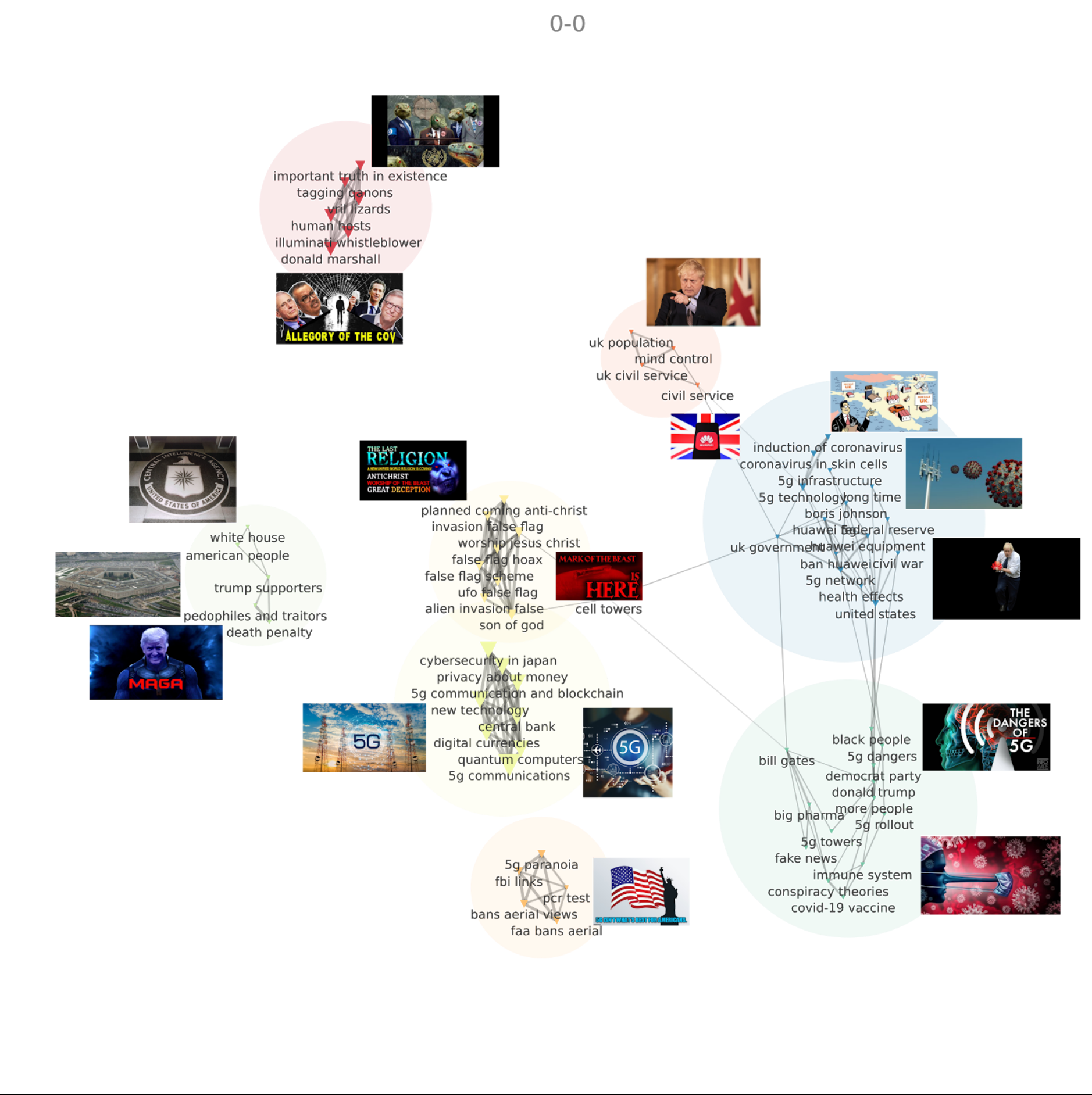 Figure 7: Co-occurences Network of Instagram posts featuring corresponding image imaginary of the users (Click to enlarge)
We found that most of the time, the pictures really match the idea of
catastrophe and "need to wake up" discourse. The pictures seem a lot
serious and with the aim of "informing" people about what is happening.
The objective was to check how the visual and textual imaginaries
compare on these platforms. The first visual represents (figure 6) a
cross-analysis of the image and text used in Instagram. It is not always
easy to clearly distinguish between the conspiracies evoked, but we see
3 main themes: Satanic/Illuminati/Matrix references (Yellow);
Manipulation through vaccines mostly led by Bill Gates (Orange, top
right); and the dangers of 5G (blue clusters). In the middle of this
there is a cluster where 5G and COVID-19 converge.
Instagram's dataset (1800 images) is composed of over half of images
containing text (mostly on a white background but also on black
backgrounds). Another specific characteristic of the dataset was the
presence of memes. Among the personalities discussed, Bill Gates and
David Icke were by far the most present ones. The main theory propagated
within this dataset is that the pandemic was instrumented by Bill Gates
and has to do with a "plandemic" and a "new world order". There is
also a very strong anti-vaxxer discourse, as well as skepticism
regarding hospitals and how they deal with Covid. There are also plenty
of correlations to satanic themes (represented mostly in red) or
toxicity/radiation (represented in yellow and green). Images of
radiation poisoning, its effects on people and the environment are also
present. Interestinly enough, the Instagram dataset contained instances
of Nazi symbolism. There were also plenty of posts with merch (mostly
T-shirts), which is a platform-specific occurrence.
Figure 7: Co-occurences Network of Instagram posts featuring corresponding image imaginary of the users (Click to enlarge)
We found that most of the time, the pictures really match the idea of
catastrophe and "need to wake up" discourse. The pictures seem a lot
serious and with the aim of "informing" people about what is happening.
The objective was to check how the visual and textual imaginaries
compare on these platforms. The first visual represents (figure 6) a
cross-analysis of the image and text used in Instagram. It is not always
easy to clearly distinguish between the conspiracies evoked, but we see
3 main themes: Satanic/Illuminati/Matrix references (Yellow);
Manipulation through vaccines mostly led by Bill Gates (Orange, top
right); and the dangers of 5G (blue clusters). In the middle of this
there is a cluster where 5G and COVID-19 converge.
Instagram's dataset (1800 images) is composed of over half of images
containing text (mostly on a white background but also on black
backgrounds). Another specific characteristic of the dataset was the
presence of memes. Among the personalities discussed, Bill Gates and
David Icke were by far the most present ones. The main theory propagated
within this dataset is that the pandemic was instrumented by Bill Gates
and has to do with a "plandemic" and a "new world order". There is
also a very strong anti-vaxxer discourse, as well as skepticism
regarding hospitals and how they deal with Covid. There are also plenty
of correlations to satanic themes (represented mostly in red) or
toxicity/radiation (represented in yellow and green). Images of
radiation poisoning, its effects on people and the environment are also
present. Interestinly enough, the Instagram dataset contained instances
of Nazi symbolism. There were also plenty of posts with merch (mostly
T-shirts), which is a platform-specific occurrence.
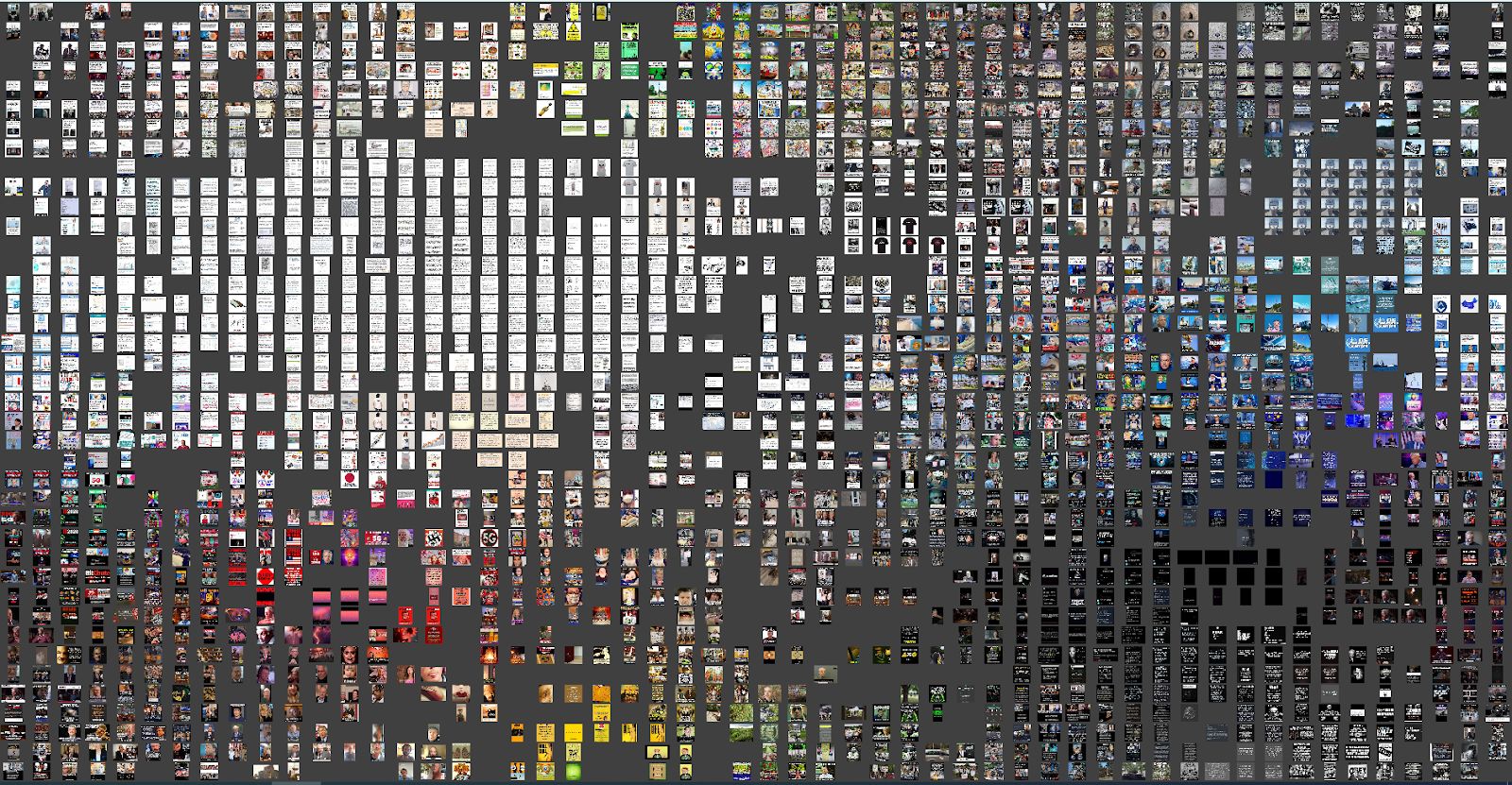 Figure 8: Image wall with the Instagram image dataset sorted by color in ImageSorter (Click to enlarge)
Regarding Parler (Figure 7), discussion seems to be more fragmented,
since there are fewer links between clusters of words. Moreover, we find
more arcane conspiracy theories like references to lizards, but also a
lot of technical discussion about 5G, not necessarily in a
conspiratorial way.
Parler's image dataset (784 images) appears to gravitate around 3 main
categories (as seen in Figure 9): tech, politics and toxicity. In this
regard, there are at least 2 companies that are most often represented:
Huawei (represented in red compositions) and Verizon; others also
appear, such as Motorola, Blackberry, LG, but in less considerable
amounts. The most obvious representation of 5G is a collection of mainly
blue 5G logos with a tech-like aspect. In terms of hardware represented,
Parler contains a large amount of antennae, as well as phones, WiFi
symbols and cars. There are also numerous images of public figures,
mostly political figures. The Parler community discusses the 5G in terms
of world domination, consent issues, lies about Covid (and about DNA,
mutations and AI within the context of the pandemic), as well as the
dangers (environmental and political) associated with 5G. In terms of
environmental concerns, an earth imagery about pollution/radiation is
present within the dataset; toxicity is one of the environmental worries
(represented in yellow and green).
Figure 8: Image wall with the Instagram image dataset sorted by color in ImageSorter (Click to enlarge)
Regarding Parler (Figure 7), discussion seems to be more fragmented,
since there are fewer links between clusters of words. Moreover, we find
more arcane conspiracy theories like references to lizards, but also a
lot of technical discussion about 5G, not necessarily in a
conspiratorial way.
Parler's image dataset (784 images) appears to gravitate around 3 main
categories (as seen in Figure 9): tech, politics and toxicity. In this
regard, there are at least 2 companies that are most often represented:
Huawei (represented in red compositions) and Verizon; others also
appear, such as Motorola, Blackberry, LG, but in less considerable
amounts. The most obvious representation of 5G is a collection of mainly
blue 5G logos with a tech-like aspect. In terms of hardware represented,
Parler contains a large amount of antennae, as well as phones, WiFi
symbols and cars. There are also numerous images of public figures,
mostly political figures. The Parler community discusses the 5G in terms
of world domination, consent issues, lies about Covid (and about DNA,
mutations and AI within the context of the pandemic), as well as the
dangers (environmental and political) associated with 5G. In terms of
environmental concerns, an earth imagery about pollution/radiation is
present within the dataset; toxicity is one of the environmental worries
(represented in yellow and green).
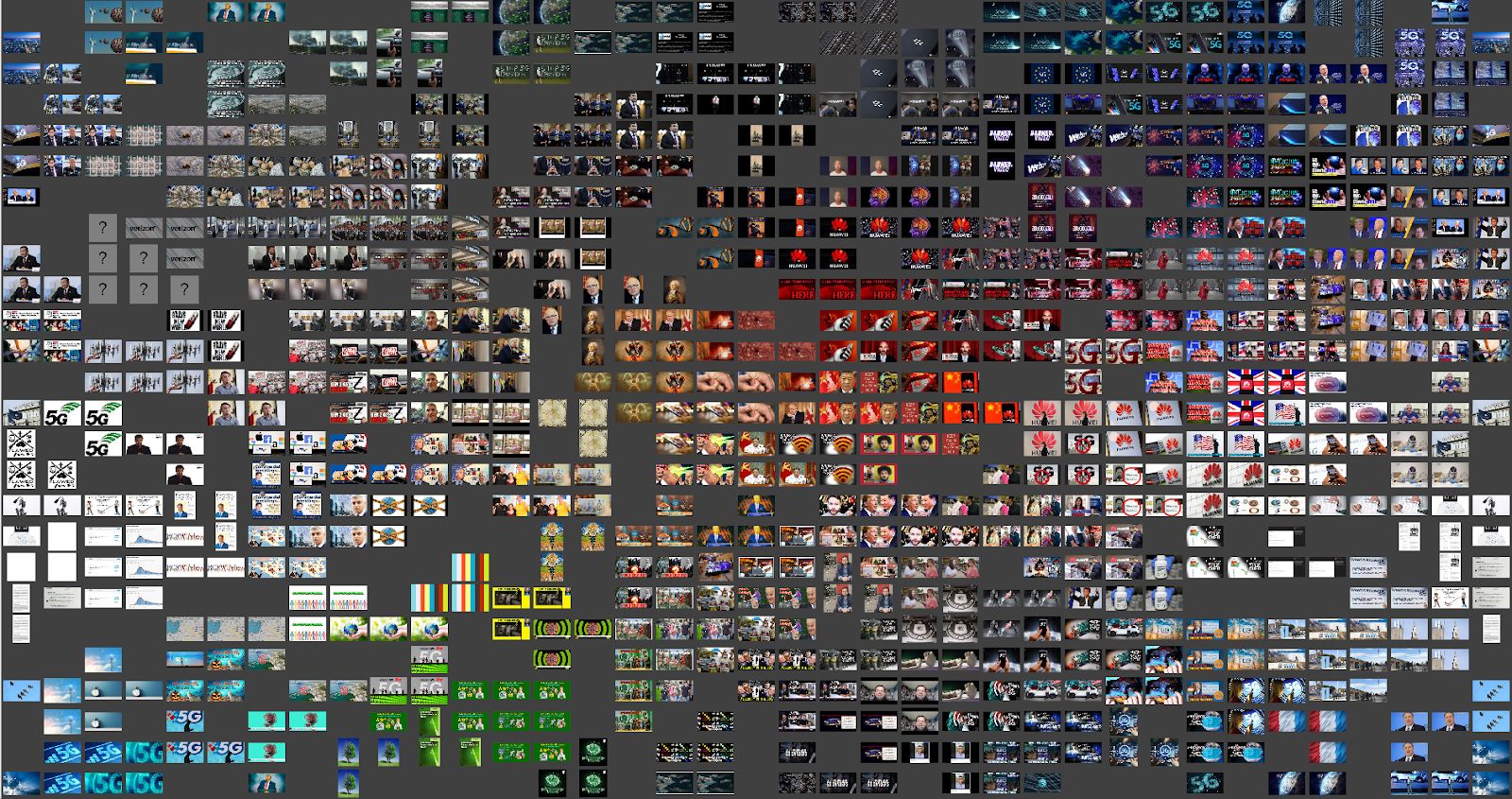 Figure 9: Image wall with the Parler image dataset sorted by color in ImageSorter (Click to enlarge)
Figure 9: Image wall with the Parler image dataset sorted by color in ImageSorter (Click to enlarge)
Narratives
Looking at the top 200 most liked posts from Instagram and Parler, these are the main strings of narratives identified: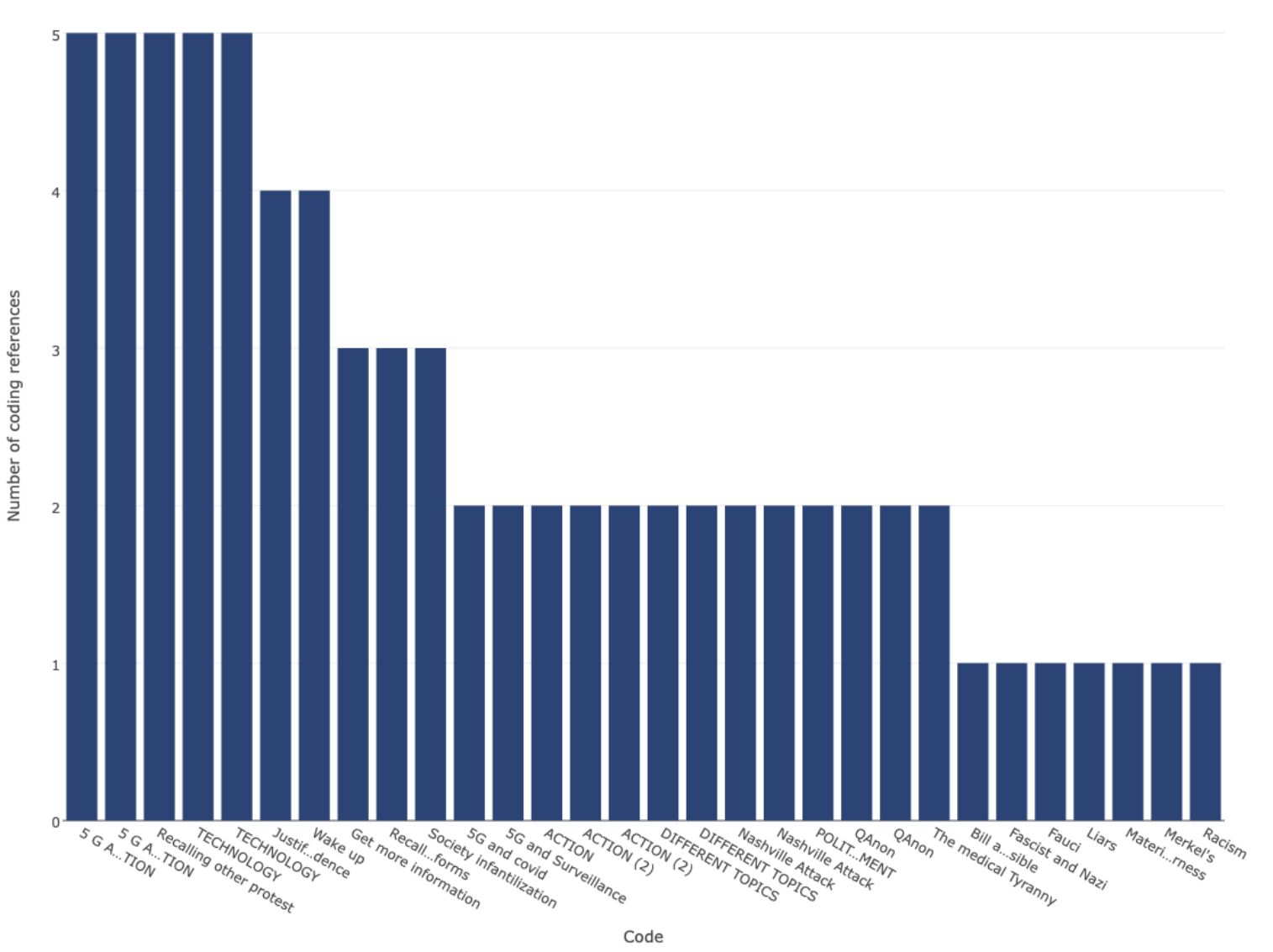 Figure 10: 42 Codes (Click to enlarge)
With a second step of coding, 8 top-level nodes emerged from the
original 42 codes:
Figure 10: 42 Codes (Click to enlarge)
With a second step of coding, 8 top-level nodes emerged from the
original 42 codes:
- Technology
- Others Attitudes
- Health
- Self-perception
- Different topics
- Action
- Politics and Government
- Feelings about the truth.
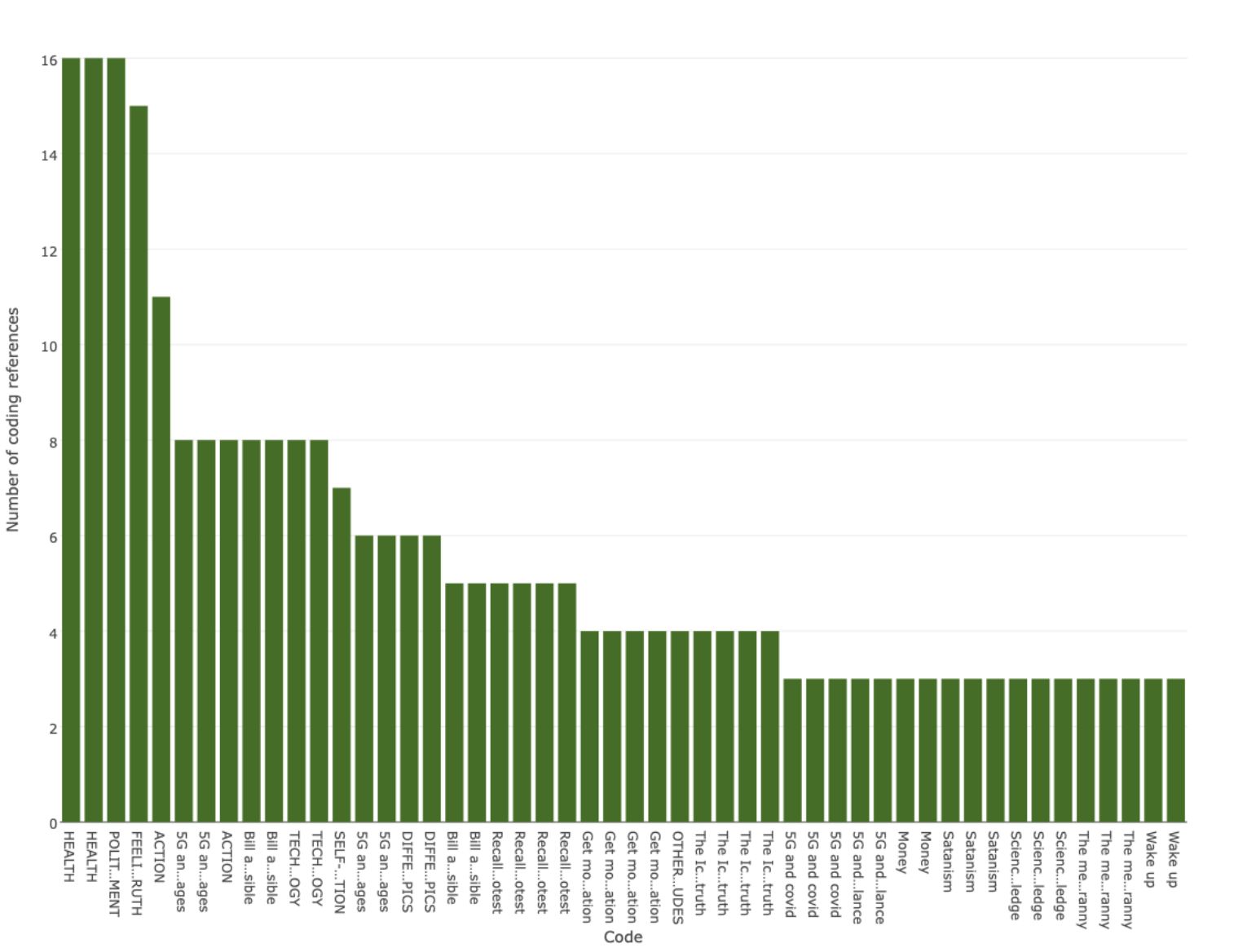 Figure 11: Number of topics on Instagram (Click to enlarge)
Figure 11: Number of topics on Instagram (Click to enlarge)
 Figure 12: Number of Topics on Parler (Click to enlarge)
In this regard, we can argue that Instagram reflects the confusion about
5G within society more so than Parler. On Instagram, the information is
more fragmented, and the emphasis is on the "us vs. them" division.
Because of the platform affordances, it is harder to distinguish users
and hashtags. There is more diverse content linked to politics, health,
etc. On the contrary, Parler is more structured and complex, something
more "scientific" and more argument-based, less organised through
hashtag affiliation than on Instagram. Users are more clearly defined
through a close reading of profiles, etc. but less distinctive in their
posts.
Figure 12: Number of Topics on Parler (Click to enlarge)
In this regard, we can argue that Instagram reflects the confusion about
5G within society more so than Parler. On Instagram, the information is
more fragmented, and the emphasis is on the "us vs. them" division.
Because of the platform affordances, it is harder to distinguish users
and hashtags. There is more diverse content linked to politics, health,
etc. On the contrary, Parler is more structured and complex, something
more "scientific" and more argument-based, less organised through
hashtag affiliation than on Instagram. Users are more clearly defined
through a close reading of profiles, etc. but less distinctive in their
posts.
User Analysis Instagram vs. Parler
As the analysis of the different user groups sharing content related to 5G conspiracies on Instagram and Parler showed, over 50% of the users listed in the respective sub-dataset have been removed, while for Parler, there was only one deleted user within the sub-dataset. Moreover, nearly 40% of the users in the Instagram sub-dataset were classified as "conspiracy theorist", as well as 10% as "ordinary user". On Parler, the majority of users (96%) were identified as "conspiracy theorist", while only 4% were categorized as "independent media". Looking at the conspiracy theory accounts within both sub-datasets, it quickly became apparent that the tribal affiliation is more diverse on Instagram than it is on Parler (Figures 13 and 14). Even though the majority of Instagram conspiracy theory accounts were classified as "religious fundamentalists", it shall be mentioned that this was only one recurring account making up for a volume of nearly 42% in the sub-dataset. While one user may not be representative for all accounts listed in the dataset, they appear to be a dominant voice in the discourse, considering their own activity and user engagement with their content in the 200 most-liked dataset. The far-right, also consisting of a considerable amount of recurring users, accounted for over 25% of conspiracy theorists on Instagram, followed by alt-health, alternative news, anti-establishment and "other" accounts. For the Parler sub-dataset, the category "other" was never used, as the users more clearly positioned themselves within one tribe through their biographies and/or feeds. Moreover, the majority of users affiliated themselves with Trumpists (75,4%), followed by the far-right (11,5%) and alternative news (8,4%), and only a small majority positioned themselves as affiliated with anti-establishment, communist, or alt-health conspiracies. Furthermore, a qualitative analysis of a few sample users revealed that some Parler users seem to have migrated to the platform after being deplatformed from Instagram (as seen in Figure 15).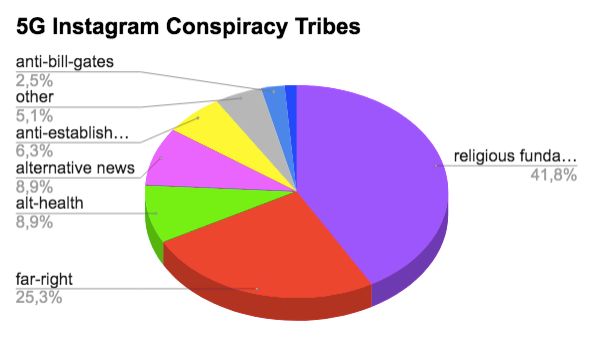 Figure 13: Tribal affiliation of Instagram conspiracy theory accounts (Click to enlarge)
Figure 13: Tribal affiliation of Instagram conspiracy theory accounts (Click to enlarge)
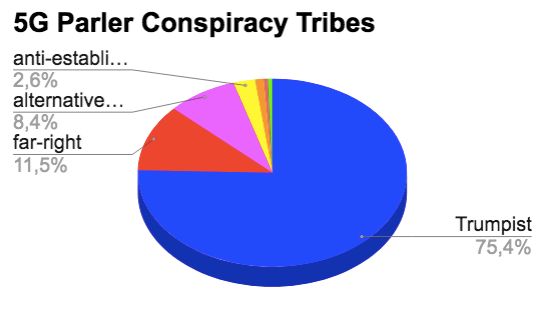 Figure 14: Tribal affiliation of Parler conspiracy theory accounts (Click to enlarge)
Figure 14: Tribal affiliation of Parler conspiracy theory accounts (Click to enlarge)
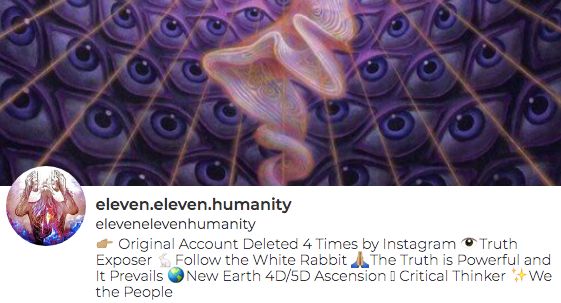 Figure 15: Example of user that migrated to Parler after being removed from Instagram (Click to enlarge)
Figure 15: Example of user that migrated to Parler after being removed from Instagram (Click to enlarge)
Time series and locations
In the figure below one can see the frequency of Instagram and Parler posts from the datasets. On Instagram, there seems to be a correlation between the frequency of 5G-posts and the first wave of Covid-19 cases in the USA. Nonetheless, this correlation seems to fade aways with time - the correlation strongly decreases during the second wave and completely disappears before the third. In general, the correlation is negative (-0.17). The large spike on the 15th of April, but this can be attributed to one single user. No spikes correspond to cell tower burnings, as was hypothesised. The number of Parler posts increases over time, and shows a -0.19 correlation with the number of Instagram posts. However, it is important to note that Parler has seen a general increase in usage in the last months of 2020. Most posts about 5G by 5G companies on Instagram are made in February, before the corona crisis reached the United States. There is no post about it in March, but later in the year some posts appear again. Lastly, not included in the figure, there was no visual correlation between the increase in 5G cell tower coverage and the number of Instagram posts about 5G.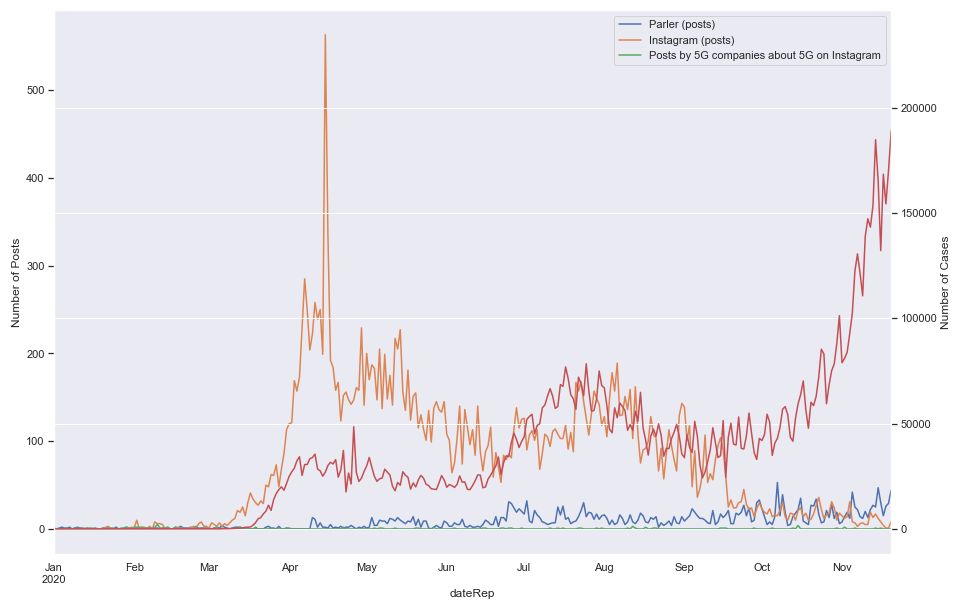 Figure 16: Time series of Instagram and Parler posts related to 5G, as well as number of Covid cases, and number of posts made by a sample of 5G companies on Instagram (Click to enlarge)
Figure 16: Time series of Instagram and Parler posts related to 5G, as well as number of Covid cases, and number of posts made by a sample of 5G companies on Instagram (Click to enlarge)
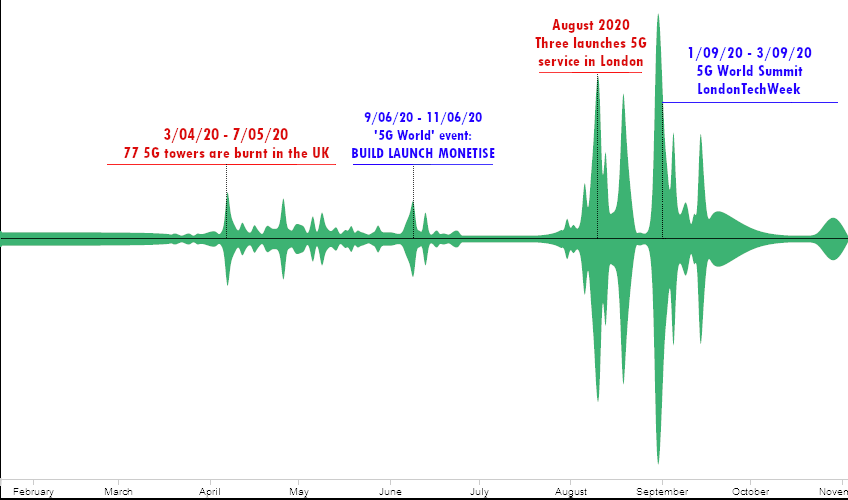 Figure 17: Frequency of 5G-conspiratorial posts based in London on Instagram (Click to enlarge)
From the previous graph (Figure 16) it can be inferred that these types
of posts do not have a strong correlation with the recent Covid-19
waves. In order to detect what might have caused these spikes, we
decided to check what are the most present cities in the data set, to
then zoom in on specific cases. Unsurprisingly, London emerged as the
most occurring location. London is one of the first cities that hosted
the 5G network as well as being particularly resilient to its deployment
- many 5G towers have been burnt around the city. In the UK almost 80 5G
towers were burned between April and May, but interestingly enough, this
did not translate into a relevant increase of 5G conspiracy posts on
Instagram. Instead, a clear correlation is found when 5G is being
discussed in the public arena. When events about 5G take place, the
topic is discussed in the mainstream media. This is seen by the
conspirators as a top-down imposition, so they react accordingly,
participating in the discussion and pushing their narratives. Indeed,
the two main peaks occurred when (i) the 5G network was introduced in
London in August; and (ii) when London hosted the "5G World Summit" in
Early September.
Figure 17: Frequency of 5G-conspiratorial posts based in London on Instagram (Click to enlarge)
From the previous graph (Figure 16) it can be inferred that these types
of posts do not have a strong correlation with the recent Covid-19
waves. In order to detect what might have caused these spikes, we
decided to check what are the most present cities in the data set, to
then zoom in on specific cases. Unsurprisingly, London emerged as the
most occurring location. London is one of the first cities that hosted
the 5G network as well as being particularly resilient to its deployment
- many 5G towers have been burnt around the city. In the UK almost 80 5G
towers were burned between April and May, but interestingly enough, this
did not translate into a relevant increase of 5G conspiracy posts on
Instagram. Instead, a clear correlation is found when 5G is being
discussed in the public arena. When events about 5G take place, the
topic is discussed in the mainstream media. This is seen by the
conspirators as a top-down imposition, so they react accordingly,
participating in the discussion and pushing their narratives. Indeed,
the two main peaks occurred when (i) the 5G network was introduced in
London in August; and (ii) when London hosted the "5G World Summit" in
Early September.
What are the interpretative frames provided by 5G equipment vendors and network operators?
Textual analysis of manufacturers' websites and Instagram posts
Using the Lippmannian Device to look at the word frequency on the vendors' network operators' websites, we found the following results: comparing Figures 18 and 19 we can conclude that some main topics that corporate actors associate 5G with are small and large scale benefits for the people who can rely on a secure 5G system for an innovative future.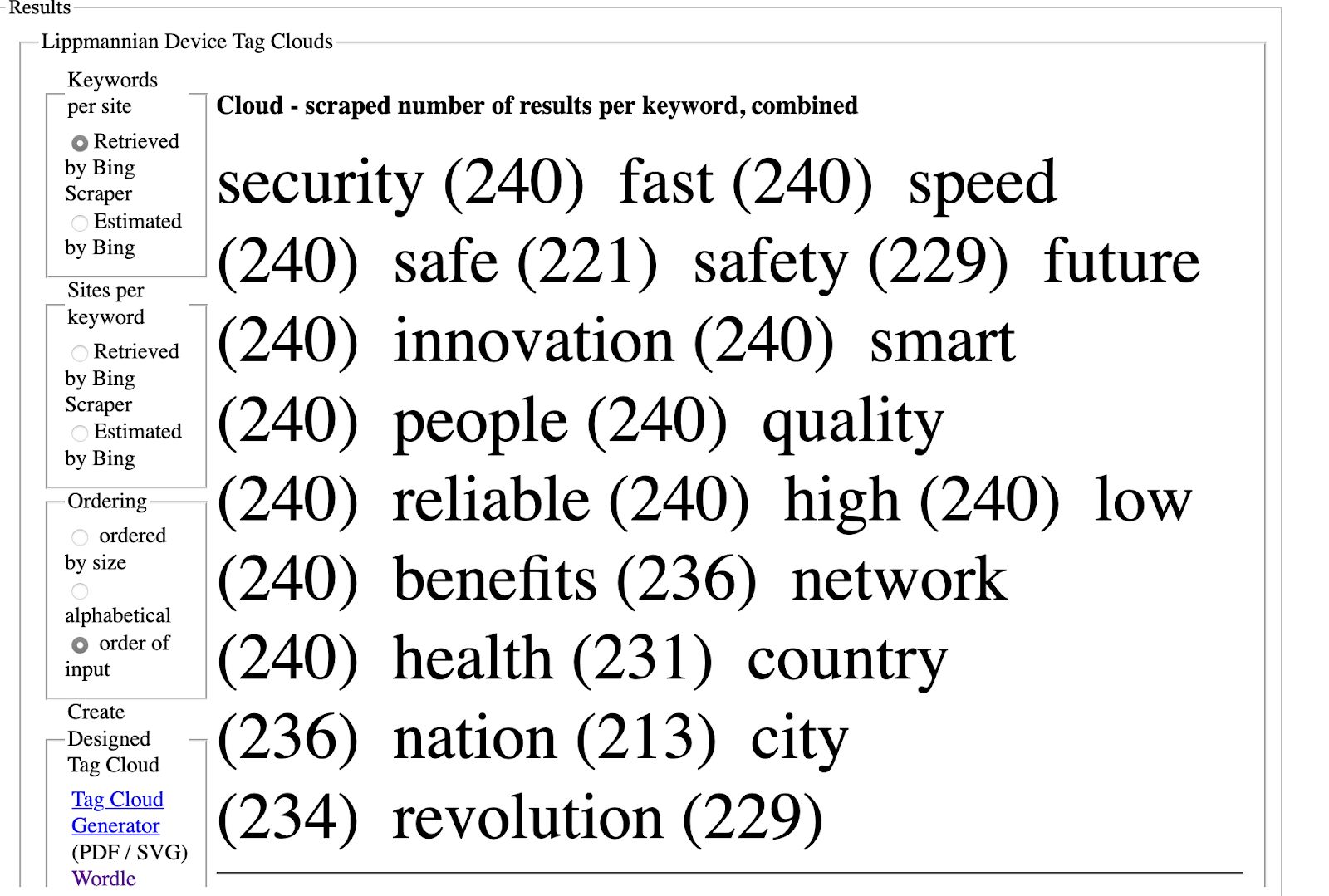 Figure 18: Tag Cloud for equipment vendors (obtained through the Lippmannian Device, click to enlarge)
Figure 18: Tag Cloud for equipment vendors (obtained through the Lippmannian Device, click to enlarge)
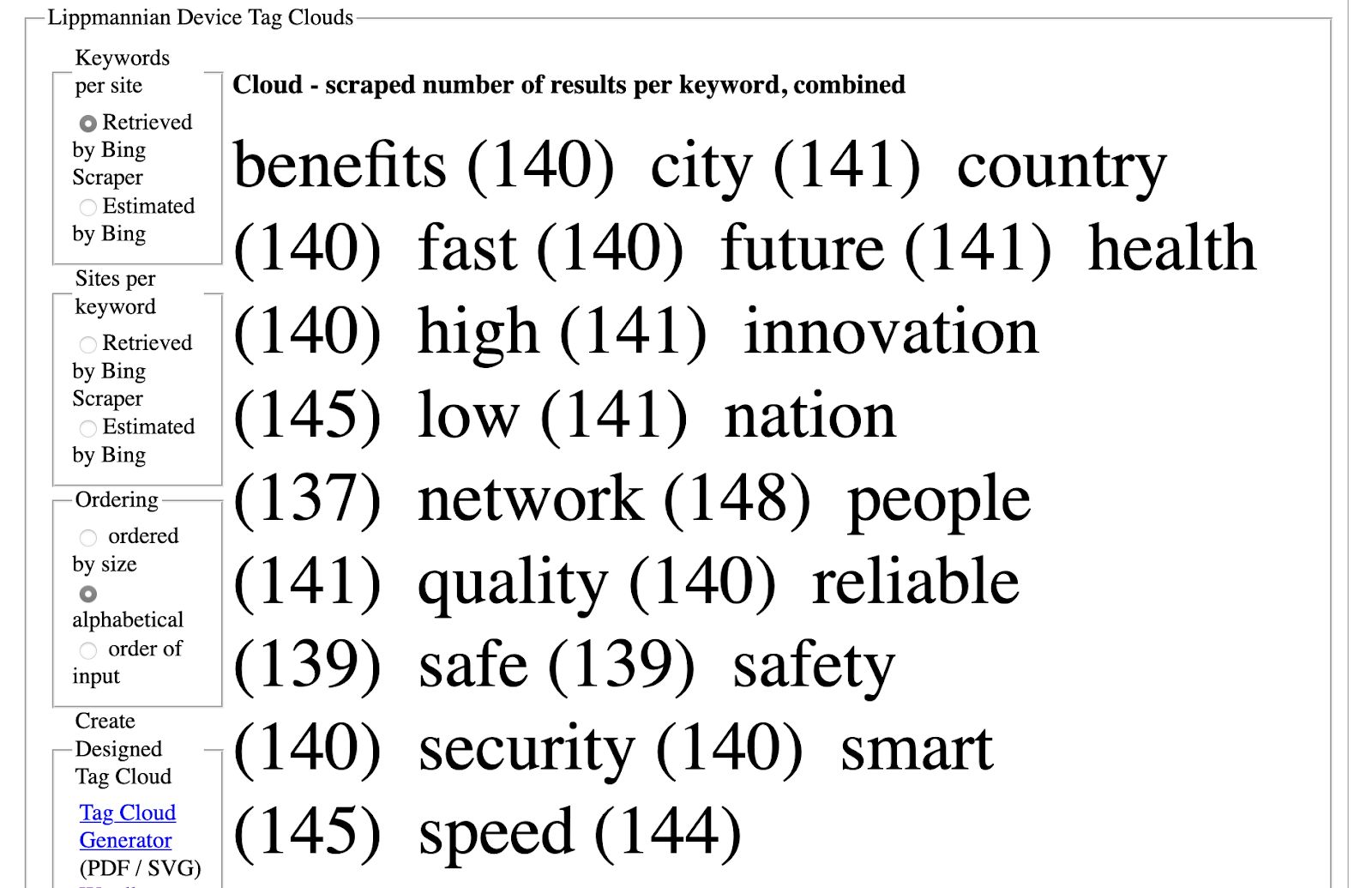 Figure 19: Tag cloud for network operators (obtained with Lippmannian Device, click to enlarge)
What can be noticed from the analysis of the word tree is the prevalence
of the terms "innovation", "first", "centre", "coverage", "platform",
"nationwide", "future", "largest", "new". This suggests the emphasis
websites put in the geographical significance of the 5G network's
coverage, and how they tend to mainly underline its innovative features,
using terms that hint (technological) advancements and centrality
("first", "centre"). This is in line with the mainstream discourse
around technological innovations, which as aforementioned tends to
associate new technologies with a general ameliory for society and an
enhancement of the overall quality of life.
The word cloud of the analysed corporate's websites (Figure 20) displays
the most occurring terms in the 5G dedicated web pages overall. in line
with what observed so far, some of the most used words are "mobile",
"data", "security", "technology", "health", "service", "future", "safe"
and "safety", "power", "society": again it can be seen how matters of
safety and wellness are juxtaposed with triggering words that light up
the imaginary of powerfulness and improvement.
Figure 19: Tag cloud for network operators (obtained with Lippmannian Device, click to enlarge)
What can be noticed from the analysis of the word tree is the prevalence
of the terms "innovation", "first", "centre", "coverage", "platform",
"nationwide", "future", "largest", "new". This suggests the emphasis
websites put in the geographical significance of the 5G network's
coverage, and how they tend to mainly underline its innovative features,
using terms that hint (technological) advancements and centrality
("first", "centre"). This is in line with the mainstream discourse
around technological innovations, which as aforementioned tends to
associate new technologies with a general ameliory for society and an
enhancement of the overall quality of life.
The word cloud of the analysed corporate's websites (Figure 20) displays
the most occurring terms in the 5G dedicated web pages overall. in line
with what observed so far, some of the most used words are "mobile",
"data", "security", "technology", "health", "service", "future", "safe"
and "safety", "power", "society": again it can be seen how matters of
safety and wellness are juxtaposed with triggering words that light up
the imaginary of powerfulness and improvement.
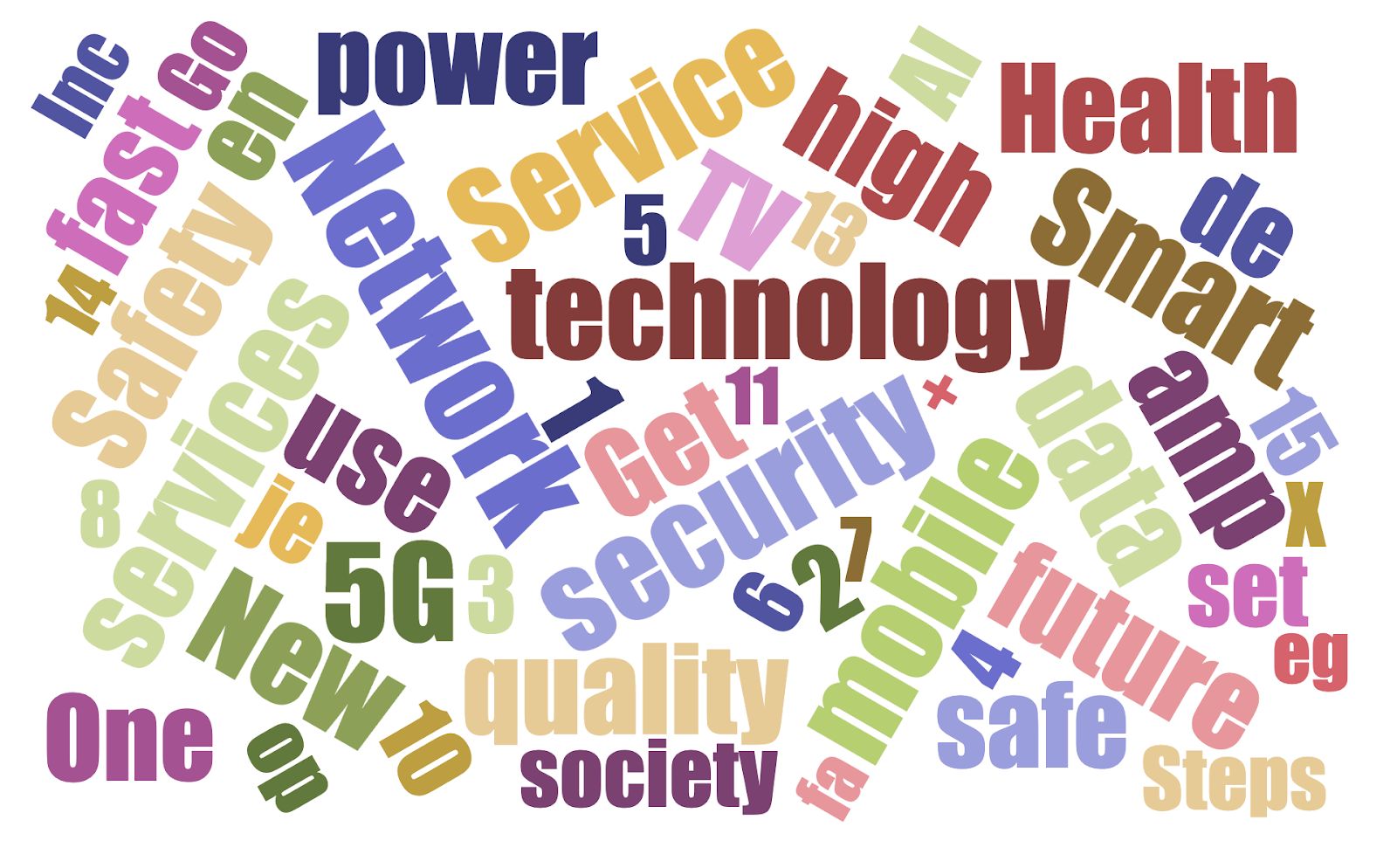 Figure 20: Word cloud of the manufacturers' websites (Click to enlarge)
An interesting comparison can be done with the word cloud of
manufacturers' Instagram posts (Figure 21). Apart from self-referencing
(supposedly mostly through hashtags), a difference stays in the larger
mention of possible application of the 5G technology, within a playful
context. These examples were observable through close readings in some
of the websites, but apparently Instagram pages tend to have content
that is more explicative and inspirational. Again, the target audience
seems to be the end user, rather than other big corporations/industries.
Figure 20: Word cloud of the manufacturers' websites (Click to enlarge)
An interesting comparison can be done with the word cloud of
manufacturers' Instagram posts (Figure 21). Apart from self-referencing
(supposedly mostly through hashtags), a difference stays in the larger
mention of possible application of the 5G technology, within a playful
context. These examples were observable through close readings in some
of the websites, but apparently Instagram pages tend to have content
that is more explicative and inspirational. Again, the target audience
seems to be the end user, rather than other big corporations/industries.
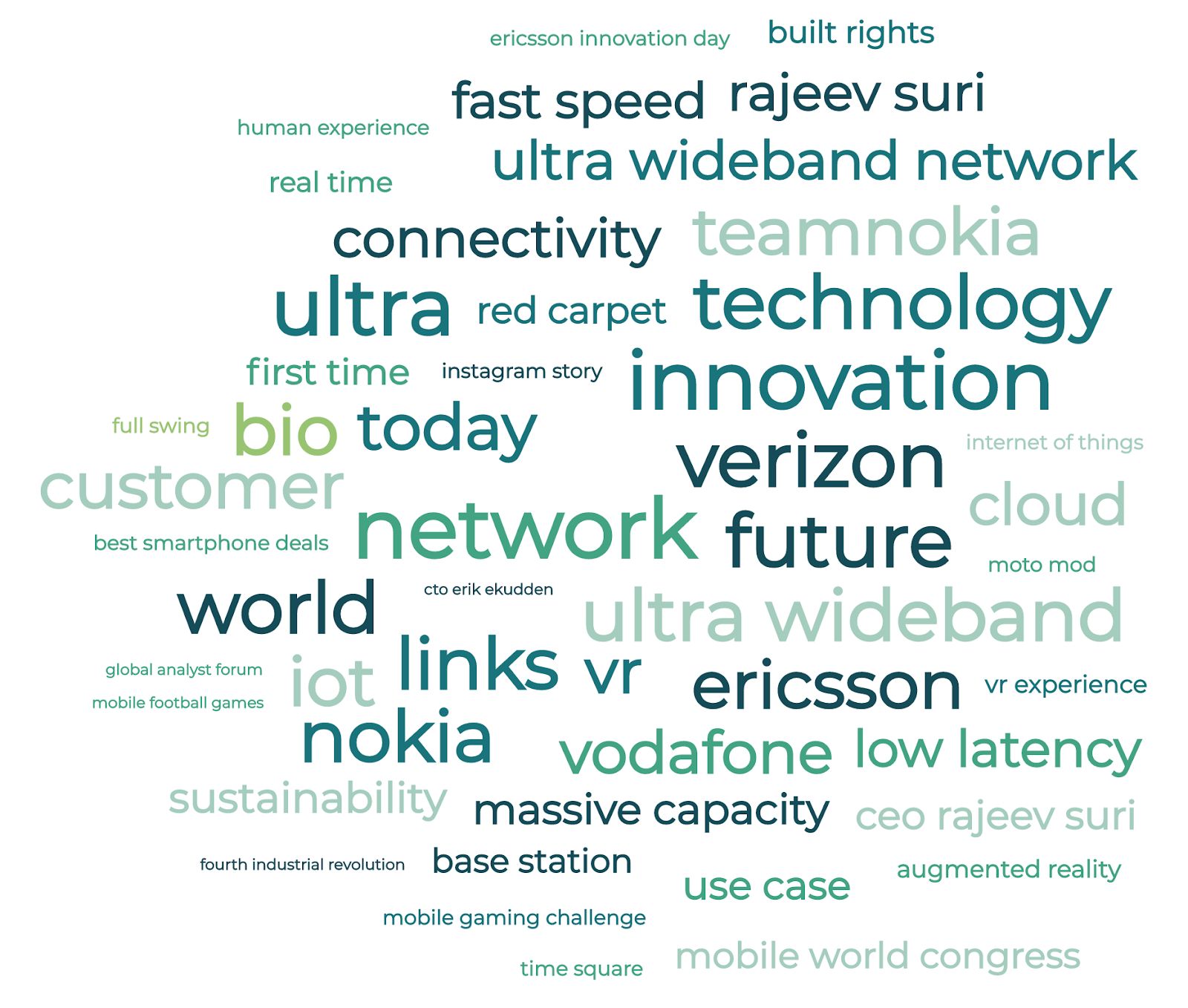 Figure 21: Word cloud manufacturers' Instagram posts (Click to enlarge)
Figure 21: Word cloud manufacturers' Instagram posts (Click to enlarge)
Co-occurrence analysis of words used by vendors on their instagram posts
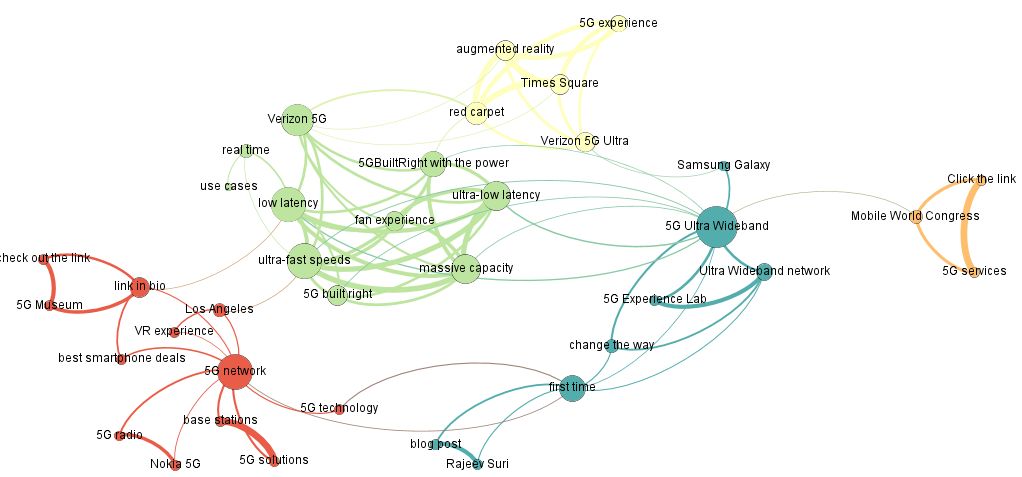 Figure 22: Co-occurrences network of the most cited words by providers on their Instagram posts (Click to enlarge)
As we see there are a lot of promises for the end user. The main
argument is to show that it will be useful for the people (and maybe try
to contradict the main idea that 5G will mostly be useful for
surveillance or hospitals). Maybe the desire to create a need for the
consumer by saying that it will change lives, change the way they do
things, have better internet etc.
Figure 22: Co-occurrences network of the most cited words by providers on their Instagram posts (Click to enlarge)
As we see there are a lot of promises for the end user. The main
argument is to show that it will be useful for the people (and maybe try
to contradict the main idea that 5G will mostly be useful for
surveillance or hospitals). Maybe the desire to create a need for the
consumer by saying that it will change lives, change the way they do
things, have better internet etc.
Visual analysis of providers' Instagram profiles
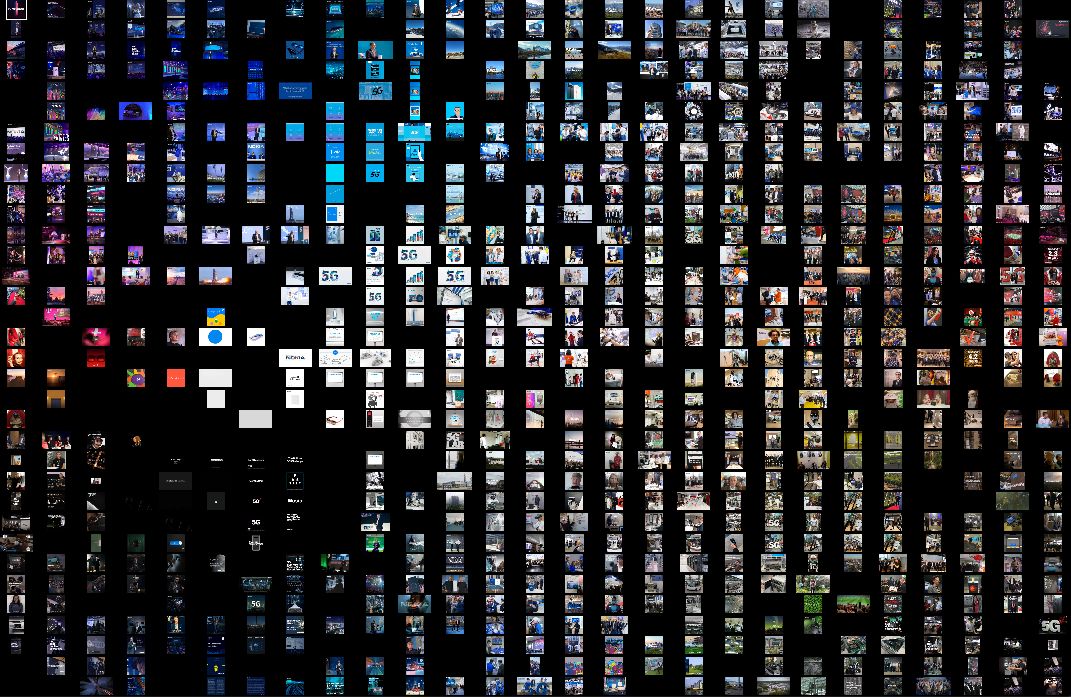 Figure 23: Visualization of all images collected from 5G providers on Instagram sorted by color in ImageSorter (Click to enlarge)
We compiled a set of 752 images which give insights into the corporate
representation of the 5G technology from 6 instagram accounts of 5g
vendors & networks operators: att, verizon, vodafone & nokia, cisco,
ericsson, all with the #5g. The images were posted between 2015 and
2020. Compared to the overall amount of posts on the company's
Instagram accounts, it is notable that only a small percentage of the
instagram posts of the companies are addressing 5G (AT&T 41 of 2018
posts, Cisco 9 out of 1398, Ericsson 70 out of 477 posts, Nokia 192 out
of 996, Verizon 117 out of 1086, Vodafone 17 out of 260).
Inductively coding the pictures with regard to their main themes, several recurring themes could be identified: people, technology, city and text. The majority of the pictures could be found in the category "people" while depictions of technology were only a minor theme in the dataset. In the category "people", images of conferences were particularly prominent, however, only considering the picture it is often not clearly related to 5G. Moreover, images showing 5g technology are rare and if technology is shown it is also often not clear how this refers to 5G. For example, pictures that depict technology show cars, robots, virtual reality glasses or mobiles, hence, technologies which emphasize 5G as an entertainment or consumer technology, rather than related to public infrastructure. Further, when the images give insights into the functionalities of the 5G technology, there is usually text included in the picture.
Thus, the companies appear to struggle with visualizing 5G without using
text. Additionally, images including text are also used to promote an
utopian vision of 5G, for example through claims such as "5G: a giant
leap for mankind" or "5G will bring technology to life, fundamentally
changing the way people live and do business". With regard to use cases
of 5G technology, "cities" are another recurring topic in the images,
serving as a key theme used by companies to explain consumers possible
use cases for 5G.
Overall, the collection of corporate Instagram posts indicate that 5G
providers mainly use Instagrams as a platform for company marketing
rather than providing information about 5G to the consumers.
Figure 23: Visualization of all images collected from 5G providers on Instagram sorted by color in ImageSorter (Click to enlarge)
We compiled a set of 752 images which give insights into the corporate
representation of the 5G technology from 6 instagram accounts of 5g
vendors & networks operators: att, verizon, vodafone & nokia, cisco,
ericsson, all with the #5g. The images were posted between 2015 and
2020. Compared to the overall amount of posts on the company's
Instagram accounts, it is notable that only a small percentage of the
instagram posts of the companies are addressing 5G (AT&T 41 of 2018
posts, Cisco 9 out of 1398, Ericsson 70 out of 477 posts, Nokia 192 out
of 996, Verizon 117 out of 1086, Vodafone 17 out of 260).
Inductively coding the pictures with regard to their main themes, several recurring themes could be identified: people, technology, city and text. The majority of the pictures could be found in the category "people" while depictions of technology were only a minor theme in the dataset. In the category "people", images of conferences were particularly prominent, however, only considering the picture it is often not clearly related to 5G. Moreover, images showing 5g technology are rare and if technology is shown it is also often not clear how this refers to 5G. For example, pictures that depict technology show cars, robots, virtual reality glasses or mobiles, hence, technologies which emphasize 5G as an entertainment or consumer technology, rather than related to public infrastructure. Further, when the images give insights into the functionalities of the 5G technology, there is usually text included in the picture.
Thus, the companies appear to struggle with visualizing 5G without using
text. Additionally, images including text are also used to promote an
utopian vision of 5G, for example through claims such as "5G: a giant
leap for mankind" or "5G will bring technology to life, fundamentally
changing the way people live and do business". With regard to use cases
of 5G technology, "cities" are another recurring topic in the images,
serving as a key theme used by companies to explain consumers possible
use cases for 5G.
Overall, the collection of corporate Instagram posts indicate that 5G
providers mainly use Instagrams as a platform for company marketing
rather than providing information about 5G to the consumers.
Visual and textual analysis of providers' YouTube channels
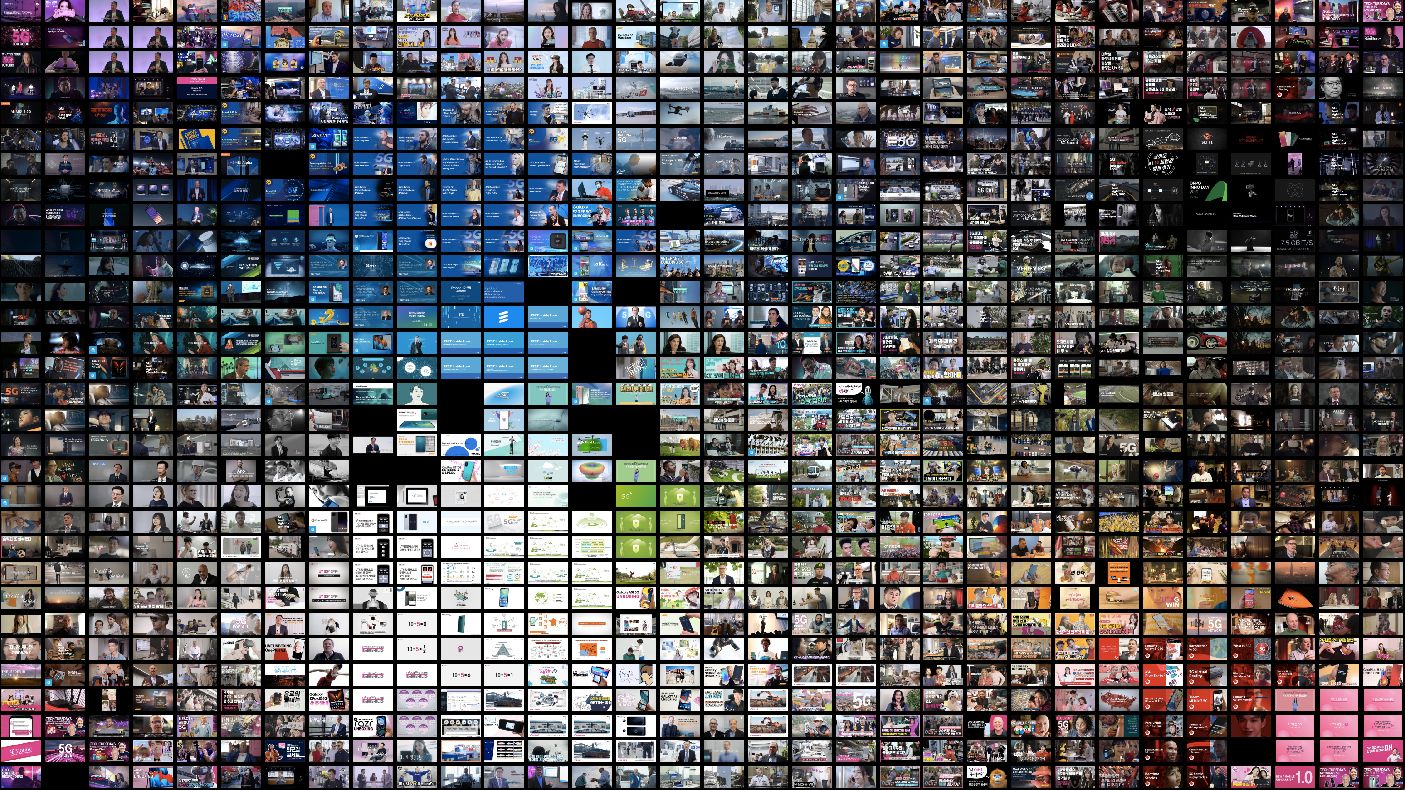 Figure 24: YouTube thumbnails from the providers' channels sorted by color in ImageSorter (Click to enlarge)
From the analysis of thumbnails, we see that these mostly depict
faces/people rather than tech, often using or demonstrating a product;
this humanizes the technology, centers its effects/benefits for
users/consumers. When the technology is shown, it is mobile phones
(especially screens), rather than infrastructures, and the focus is on
innovation and different markets (e.g. sports, VR, gaming). Brands have
cohesive and consistent color schemes and there's not much
ethnic/racial diversity as far as the representation of people is
concerned, especially for Asian companies.
Figure 24: YouTube thumbnails from the providers' channels sorted by color in ImageSorter (Click to enlarge)
From the analysis of thumbnails, we see that these mostly depict
faces/people rather than tech, often using or demonstrating a product;
this humanizes the technology, centers its effects/benefits for
users/consumers. When the technology is shown, it is mobile phones
(especially screens), rather than infrastructures, and the focus is on
innovation and different markets (e.g. sports, VR, gaming). Brands have
cohesive and consistent color schemes and there's not much
ethnic/racial diversity as far as the representation of people is
concerned, especially for Asian companies.
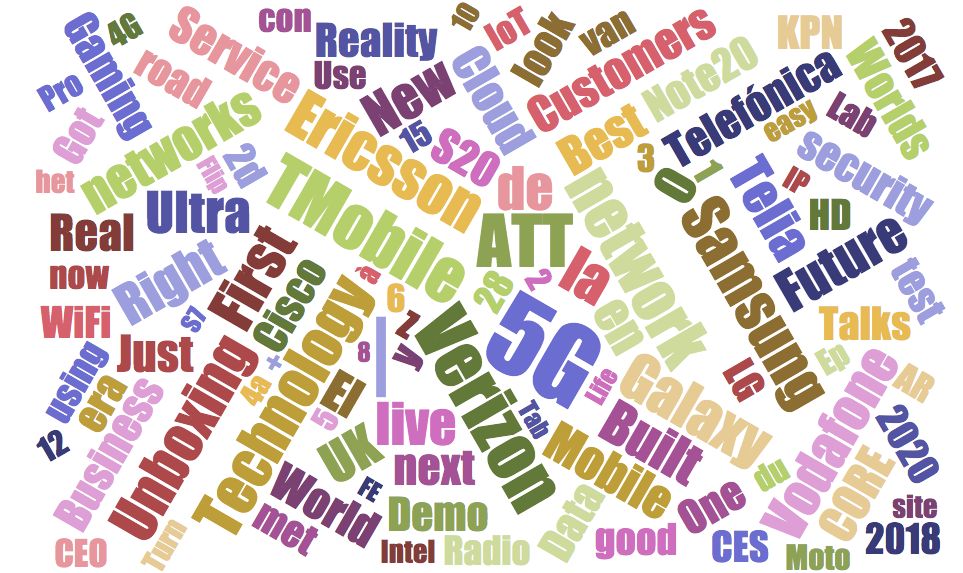 Figure 25: Word cloud made with the video titles from the providers' YouTube channels (Click to enlarge)
A word cloud was also produced from the video titles taken from the
providers' YouTube channels. The discourse here is similar to what we
saw previously. We can observe a focus on brands, innovation, positive
terminology, focus on mobile tech rather than infrastructure.
Figure 25: Word cloud made with the video titles from the providers' YouTube channels (Click to enlarge)
A word cloud was also produced from the video titles taken from the
providers' YouTube channels. The discourse here is similar to what we
saw previously. We can observe a focus on brands, innovation, positive
terminology, focus on mobile tech rather than infrastructure.
6. Discussion
5G Discourse on Instagram vs. Parler
One of the most crucial findings we arrived at is the difference between critical interpretative frames between the two platforms. The main observation to be made in this regard is that on Instagram the discussed theories are less connected to each other and less coherent, making the platforms a fragmented opinion space, where 5G theories are not in dialogue with each other. In contrast, Parler is a much more unified space, where the discussion topics are related to each other through various sub-topics. Debate is much more driven by politics, which makes it possible to identify a distinctive style of discussing 5G on the platform. As our findings for the user analysis showed, over half of the accounts listed in the Instagram dataset were removed, while for Parler, it was only one user. Considering that the Instagram dataset was composed retrospectively, whereas the Parler dataset was a more timely collection of 5G conspiracy related posts, this result could be attributed to the limitations of our methodology. Nevertheless, this finding also stands in accordance with the platforms' regulations, content moderation and overall character. Instagram, as a mainstream platform, has considerably stricter community guidelines, which prohibit the spread of conspiratorial content, and a content moderation system that flags and bans users that violate the platform rules. Parler as an unregulated fringe platform, on the other hand, allows users to spread conspiracies and even go into detail thereon. Therefore, it is more likely that the users that have disappeared from the Instagram sub-dataset have been removed by the platform, rather than deleting their own accounts. Moreover, the fact that both the user groups and conspiratorial affiliation are more diverse on Instagram, supports the claim that on mainstream platforms conspiracies exist without theory. On mainstream platforms, conspiracy theories appear in a fragmented and incoherent, rather than structured and argumentative way. In construct, on a fringe platform like Parler, users seem to position themselves somewhat like "experts" belonging to one specific conspiratorial tribe, rather than users sharing conspiracies that cannot be clearly categorized. Analysis of the co-hashtag network visualization seems to support this as well, as hashtag usage on Parler was considerably more clustered than on Instagram. Examination of the hashtags also showed that Instagram had a large number of hashtags that were iterative of the central 5G node, whereas Parler hashtags were rarely related or iterative to 5G. The strong presence of deep vernacular conspiracy terms, with strong relations to QAnon-related conspiracy theories, rather than relations to 5G- or COVID-related terms, also indicates that discourse on Parler was less focused on 5G than on Instagram. The visual analysis further confirms these findings. As we have shown, the images used on Instagram suggest a less unified approach on the matter, with a high degree of Bill Gates conspiracies and anti-vaxxer discourse. On the other hand, the Parler images indicate a more politicised discourse on the topic, including references to more politicians and tech companies. What these approaches suggest is that users on mainstream and fringe platforms create different interpretative frames around 5G, where the mainstream platform is more fragmented and there is less context around posts, while the fringe one is more coherent, with tighter connections between the various themes.Textual analysis of manufacturers' websites and Instagram posts
During the close reading, it can be observed how the 5G is mainly described as: fast, reliable, secure, and empowering the future. Exemplary, the website of CAICT states: \"5G will expand the connotations of people's livelihood and well-being". The qualities of 5G are always enumerated. These usually are: high speed, high volume transmission, improved connectivity (especially in comparison with 4G). Blackberry, for instance, writes: "5G: both exciting and ambiguous in what it portends in the way of benefits and risks. This session will explore the challenges and the blessings this technology brings and how you can proactively position yourself securely". Most websites tend to have a main session dedicated to answering the questions "What is 5g?" and "Is it safe?", displaying their attempt to face and appease the most widespread doubts and fears about this novel technology. Innovation is a persistent term, in conjunction with the explanation of the various benefits for the individual consumer and society at large. The most widely adopted narrative is that the future means improved technology, which leads to a general well-being. Vendors also emphasise the "_empowering_" and "_transforming_" character of 5G. Together with "innovation" and "advancement". Finally, "revolution" is mentioned at times. Zooming in to the most occurring terms, we can have a better idea of how they are associated. "First" is linked to "mobile", "operator", "network", "in the country", "commercial", displaying a marketing strategy: all the manufacturers place themselves in a position of primacy and advantage in their capability of offering a new product. In conclusion, the close reading of the word trees shows that the main focus of companies appears to be the individual end-users. Assuming that such an audience is more congenial to mobile devices and home internet connection, rather than a large-scale usage of 5G, most of the websites accordingly manifest the attempt to sell such products. Therefore, infrastructures and materials that enable the 5G technology are left outside the conversation, leading to a possible knowledge gap within the audience.Visual and textual analysis of providers' YouTube channels
Much like on Instagram, users are seen as active consumers rather than citizens. The focus on people might help build an emotional connection to the brand, as opposed to one informed by concrete information about the implications of the technology. However, this might ultimately fail to connect the represented technology to anything that is meaningful to people beyond the technology itself. It is questionable whether meaningful and powerful emotions can be summoned in this way. Similarly, in the titles, brand visibility, consumer-targeted activities, and innovation are prioritized over information. This potentially heightens the cognitive gap, which users might feel compelled to fill themselves with their own interpretative frames.Time series and locations
With regards to the world-wide time series, we found no conclusive evidence of correlation with other events in the overall graph. The first intuitive hypothesis was that Instagram deplatformed many of the 5G users that then subsequently migrated to Parler. But this could be a confounding bias, because Parler has been experiencing an overall increase in users since the second half of 2020. Furthermore, only one of 3652 Instagram users in our dataset was traceable down to a user in the Parler dataset. This is of course limited by the sample size, and further study into the migration between platforms could offer insight. Due to limited time, the question of increased moderation on Instagram was outside the scope of this project, but could be an interesting avenue of research in the future. The fact that the largest spike of Instagram posts on a single day could be attributed to one user raises the question of authentic behaviour. Future research could look into how much this discussion is fueled by a small group of users, and whether this can be considered inauthentic. We had only limited time to work on the locations of the posts. With more time we believe it would be fruitful to create a map over time, and see whether some changes occur. Furthermore, it could be interesting to do more detailed case studies of specific locations, such as what has been done with London. Reconducting the world-wide discussion to local trends might help detect sharing patterns and their cause. Therefore we recommend further research in this area. We note that Archive Team is making available a large Parler archive on the Internet Archive, which covers an extended time span7. Conclusion
Vendors and network operators are more concerned about marketing than being transparent on the technicalities of 5G. They also fail to create a meaningful imaginary. This results in a cognitive gap that is filled by social media users who apply their own interpretative frames. The shape of these narrative frames changes according to the nature of the platform where they are spreading:- Instagram being popular and mainstream, the discussion stems from different topics such as health, technology and politics. Thus, they emerge as fragmented and not necessarily coherent with each other.
- On Parler the user base is more homogenous and thus, the discussion appears to be less fragmented and more polarized towards few main narratives.
Recommendations
Only another imaginary can compete with the conspiracy theories around 5G. A possible approach for mitigating the negative effects of conspiracy theories is to link 5G technology to some known personalities, historical events, or absolute categories that people are already familiar with, feel strongly about, and that puts the product/service in a wider context. Our conclusion is that in this present moment it is only the grassroots conspiracy theorists who can do this successfully. We understand success here as developing a detectable influence on how regular people see an issue, something we can measure on Instagram. The key to this success is a more tightly collaborative production process that takes place in subcultural spaces such as Parler. To conclude, out recommendation diverges from the policy recommendations in other studies, in that it does not focus on information and counter-information, but imagination and counter-imagination, namely the more meaningful category of imaginaries.Limitations
Scope: On the one hand, we might have looked at too many different things, from corporate marketing on YouTube through pop culture on Instagram to deep subculture on Parler. This is due to the dispersed and spontaneous structure of hackathons like the summer school and a consequence of having 17 proactive and self-motivated participants collaborating. On the other hand, we missed looking at the state perspective, such as regulators, standards bodies, local councils, parliamentary committees, etc. who all have their own distinctive takes on 5G. One of our main claims is that people are framed as consumers by companies, while in the context of conspiracy theories they frame themselves as living bodies and citizens, and that the latter frame emerges in the vacuum left by the failure of companies to deliver a powerful imaginary accompanying the ongoing 5G deployment. Imaginaries to citizens are most often supplied by state-related entities, so that studying their discourse would be necessary in order to make our argument complete. We avoided studying the state perspective because of the context of the Winter School as a methodological exercise and research prototyping space, since the corporate perspective would be reconstructed through the same research protocols as the state perspective. For the same reason, it is relatively straightforward to complete our investigation and add the state perspective, since the research protocol for reconstructing the corporate perspective applies and could be followed.8. References
Ahmed, W., Downing, J., Tuters, M., & Knight, P. (2020). Four experts investigate how the 5G coronavirus conspiracy theory began. The Conversation. http://theconversation.com/four-experts-investigate-how-the-5g-coronavirus-conspiracy-theory-began-139137 Ahmed, W., Vidal-Alaball, J., Downing, J., & López Seguí, F. (2020). COVID-19 and the 5G Conspiracy Theory: Social Network Analysis of Twitter Data. Journal of Medical Internet Research, _22_(5), 1--9. Bruns, A., Harrington, S., & Hurcombe, E. (2020). 'Corona? 5G? or both?': The dynamics of COVID-19/5G conspiracy theories on Facebook. Media International Australia, _177_(1), 12--29. Easterling, K. (2014). Extrastatecraft: The Power of Infrastructure Space. Verso. Rosenblum, N. L., & Muirhead, R. (2019). A Lot of People Are Saying: The New Conspiracism and the Assault on Democracy. Princeton University Press.9. Appendix
A. 5G companies
A.1. Vendors
[Organization, URL] Apple, http://apple.com Blackberry, http://blackberry.com Broadcom, http://broadcom.com CATT, http://catt.nyu.edu/ Cisco, http://cisco.com Ericsson, http://ericsson.com ETRI, http://etri.re.kr/ Futurwei, http://futurewei.com Google, http://google.com HP, http://hp.com Huawei, http://huawei.com Infineon, http:/infineon.com Intel, http://intel.com Interdigital, http://www.interdigital.com Juniper, http://juniper.net Kapsch, http://kapsch.net Kyocera, http://kyocera.com Lenovo, http://lenovo.com LG, http://lg.com Matrixx SwMavenir, http://mavenir.com MediaTek, http://mediatek.com Mitsubishi, http://mitsubishielectric.com/ Motorola Mobility, http://motorola.com Newtec, http://newtec.com Nokia, http://nokia.com OPPO, http://oppo.com Samsung, http://samsung.com Sandvine, http://sandvine.com Sharp, http://sharp.com Sony, http://sony.com Spirent, http://spirent.com Vivo, http://vivo.com XiaoMi, http://xiaomi.com ZTE, http://zte.com []{#anchor-49}A.2. Network Operators AT&T, http://att.com Avanti, https://avantiplc.com Bell Canada, http://bell.ca BT, http://bt.com CableLabs, http://cablelabs.com CAICT, http://caict.ac.cn Charter, http://charter.ca China Mobile, http://chinamobileltd.com China Telecom, http://www.chinatelecom-h.com China Unicom, http://chinaunicom.com/ CISA, http://www.cisa.gov FirstNet, http://firstnet.com Hughes, http://hughes.com Inmarsat, http://inmarsat.com Intelsat, http://intelsat.com KDDI, http://kddi.com KPN, http://kpn.com KT, https://www.kt.com/ LG U+, https://www.uplus.co.kr/ NTT DoCoMo, https://www.nttdocomo.co.jp/ Orange, http://orange.com Rogers, http://rogers.com SES, https://www.ses.com/ SK Telecom, https://www.sktelecom.com/ Softbank, https://www.softbank.jp/ Telecom Italia, https://www.tim.it/ Telefonica, https://www.telefonica.com/ Telenor, https://www.telenor.com/ Leonardo, https://www.leonardocompany.com/ Telia, https://www.teliacompany.com/ Telstra, https://www.telstra.com.au/ Telus, https://www.telus.com/ T-Mobile, https://www.t-mobile.com/ Turkcell, https://www.turkcell.com.tr/ Verizon, https://www.verizon.com/ Vodafone, https://www.vodafone.com/A.3. Specific 5G-related websites/minisites from companies:
https://www.att.com/5g/consumer/ https://www.avantiplc.com/news/avanti-sat5g-successful-integration-of-5g-core-network-into-live-satellite-network/ https://www.bell.ca/Mobility/Our\_network/5G https://www.bt.com/help/mobile/what-is-5g-on-bt https://www.cablelabs.com/10g/5g http://www.caict.ac.cn/english/research/whitepapers/202003/t20200327_278199.html https://5g.hk.chinamobile.com/en/ https://www.cisa.gov/5g https://www.firstnet.com/community https://www.t-mobile.com/5g/news/nationwide-lte-coverage-surpasses-2-61-million-square-mile.html https://www.orange.com/en/foundation-digital-revolution/much-more-just-gigabits-promises-5g https://www.telus.com/en/about/5g https://www.vodafone.com/what-we-do/technology/5g https://www.verizon.com/5g/ https://www.telenor.com/media/press-release/telenor-opens-first-commercial-5g-network-in-norway https://www.telstra.com.au/5gB. Key words
security, fast, speed, safe, safety, future, innovation, smart, people, quality, reliable, high, low, benefits, network, health, country, nation, cityC. Equipment vendors
- No blackberry because the website only has videos
- No CATT since it has no page dedicated to the 5G
- No Futurewei because it has no page on 5g
- No Google because it only had 5g in its official page for the mobile phones
- No Kapsch because it has no 5g page in English
- No LG (it only has phone store as results for 5g)
- No Motorola (same as LG)
- No OPPO (same as LG)
- No Sharp (no dedicated webpage on 5g)
- No Vivo (no webpage on 5g)
- No xiaomi (no webpage on 5g)
D. URLs scraped with the Lippmannian device:
https://www.apple.com/newsroom/2020/10/apple-introduces-iphone-12-pro-and-iphone-12-pro-max-with-5g/ https://www.broadcom.com/solutions/broadband-wired-networking/5G-HD https://www.cisco.com/c/en/us/solutions/what-is-5g.html https://www.ericsson.com/en/5g https://etri.re.kr/eng/sub6/sub6\_01020101.etri?departCode=37&departInfoCode=90 https://store.hp.com/us/en/tech-takes/what-is-5g https://carrier.huawei.com/en/products/wireless-network https://www.infineon.com/cms/en/discoveries/mobile-communication-5g/ https://www.intel.com/content/www/us/en/wireless-network/5g-technology-overview.html https://www.interdigital.com/page/5g https://www.juniper.net/us/en/solutions/5g-networking/ https://global.kyocera.com/ces/5g-solutions/ https://news.lenovo.com/pressroom/press-releases/lenovo-delivers-on-5g-computing-with-leading-global-network-operators/ https://www.matrixx.com/5g-bss-technology/>; https://mavenir.com/portfolio/core/cloud-packet-core/5g-core/>; https://i.mediatek.com/mediatek-5g https://www.mitsubishielectric.com/en/about/rd/research/highlights/communications/5g.page https://www.newtec.eu/products/market/5g https://www.nokia.com/networks/5g/ https://www.samsung.com/us/mobile/5g/what-is-5g/ https://www.sandvine.com/blog/exploring-5g-network-intelligence-requirements-disruptive-mobile-analytics-with-sandvines-active-network-intelligence https://www.sony.com/en_us/SCA/company-news/press-releases/sony-electronics/2019/sony-and-verizon-demonstrate-how-5g-stands-to-transform-live-sports-production.html https://www.spirent.com/solutions/5g-network-testing https://www.zte.com.cn/china/topics/zte-5g-en/index.htmlE. Visual and textual analysis of providers' YouTube channels
Two sets of actors:Equipment Vendors
Apple // Blackberry // Broadcom // CATT // Cisco // Ericsson // ETRI // Futurewei // Google // HP // Huawei // Infineon // Intel // Interdigital // Juniper // Kapsch // Kyocera // Lenovo // LG // Matrixx Sw // Mavenir // MediaTek // Mitsubishi // Motorola Mobility // Newtec // Nokia // OPPO // Samsung // Sandvine // Sharp // Sony // Spirent // Vivo // XiaoMi // ZTENetwork Operators
AT&T // Avanti // Bell Canada // BT // CableLabs // CAICT // Charter // China Mobile // China Telecom // China Unicom // CISA // FirstNet // Hughes // Inmarsat // Intelsat // KDDI // KPN // KT // LG U+ // NTT DoCoMo // Orange // Rogers // SES // SK Telecom // Softbank // Sprint // Telecom Italia // Telefonica // Telenor // Leonardo // Telia // Telstra // Telus // T-Mobile // Turkcell // UK HO // Verizon // VodafoneSlides (link)
https://wiki.digitalmethods.net/pub/Dmi/WinterSchool2021Infodemic5G/Project%20Report.pdfDatasets (links)
https://drive.google.com/drive/folders/1pWuEHGXg9ieS4ac667stMd9ht9DuYWcREdit | Attach | Print version | History: r2 < r1 | Backlinks | View wiki text | Edit wiki text | More topic actions
Topic revision: r2 - 28 Jan 2021, MaXiGaS
 Copyright © by the contributing authors. All material on this collaboration platform is the property of the contributing authors.
Copyright © by the contributing authors. All material on this collaboration platform is the property of the contributing authors. Ideas, requests, problems regarding Foswiki? Send feedback


